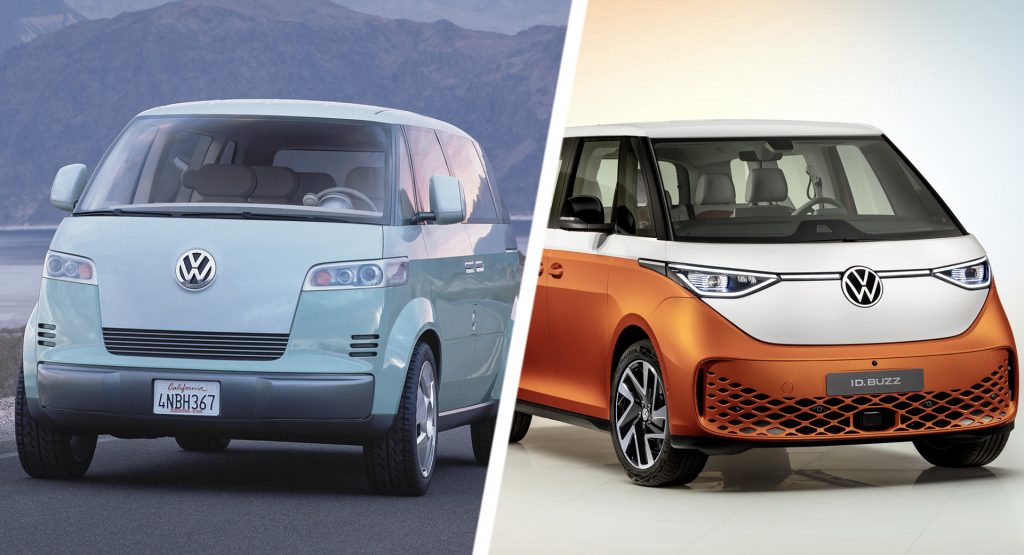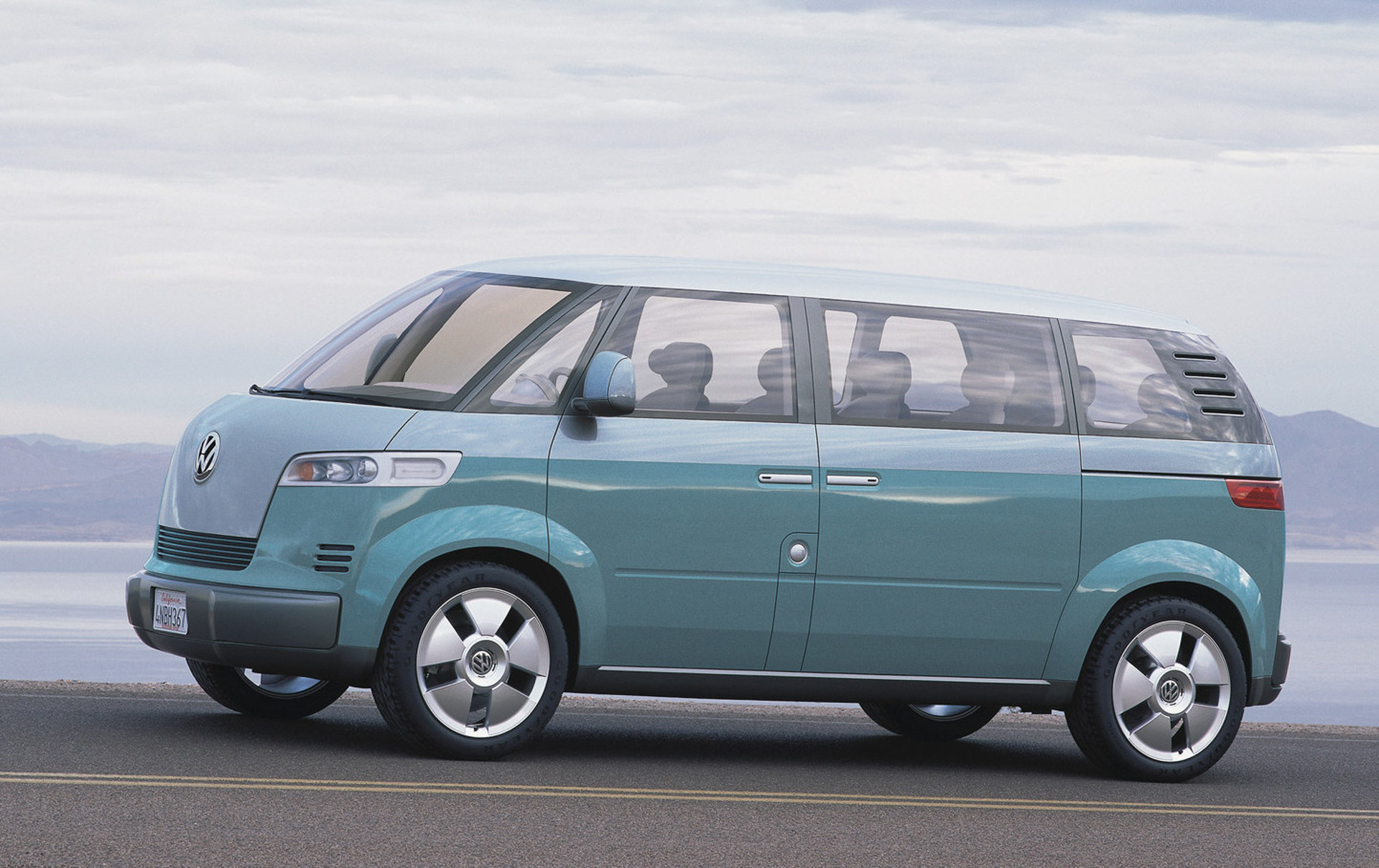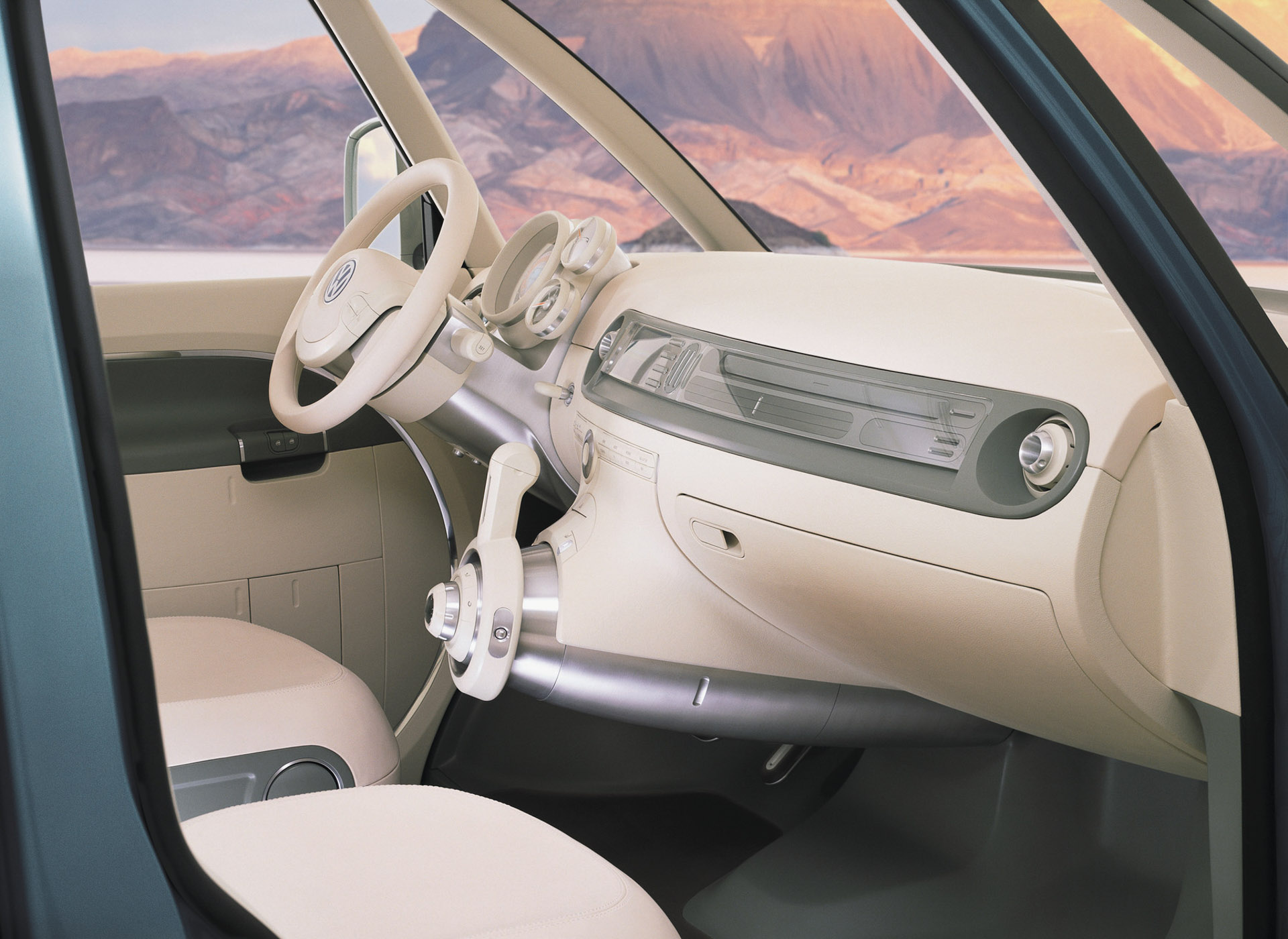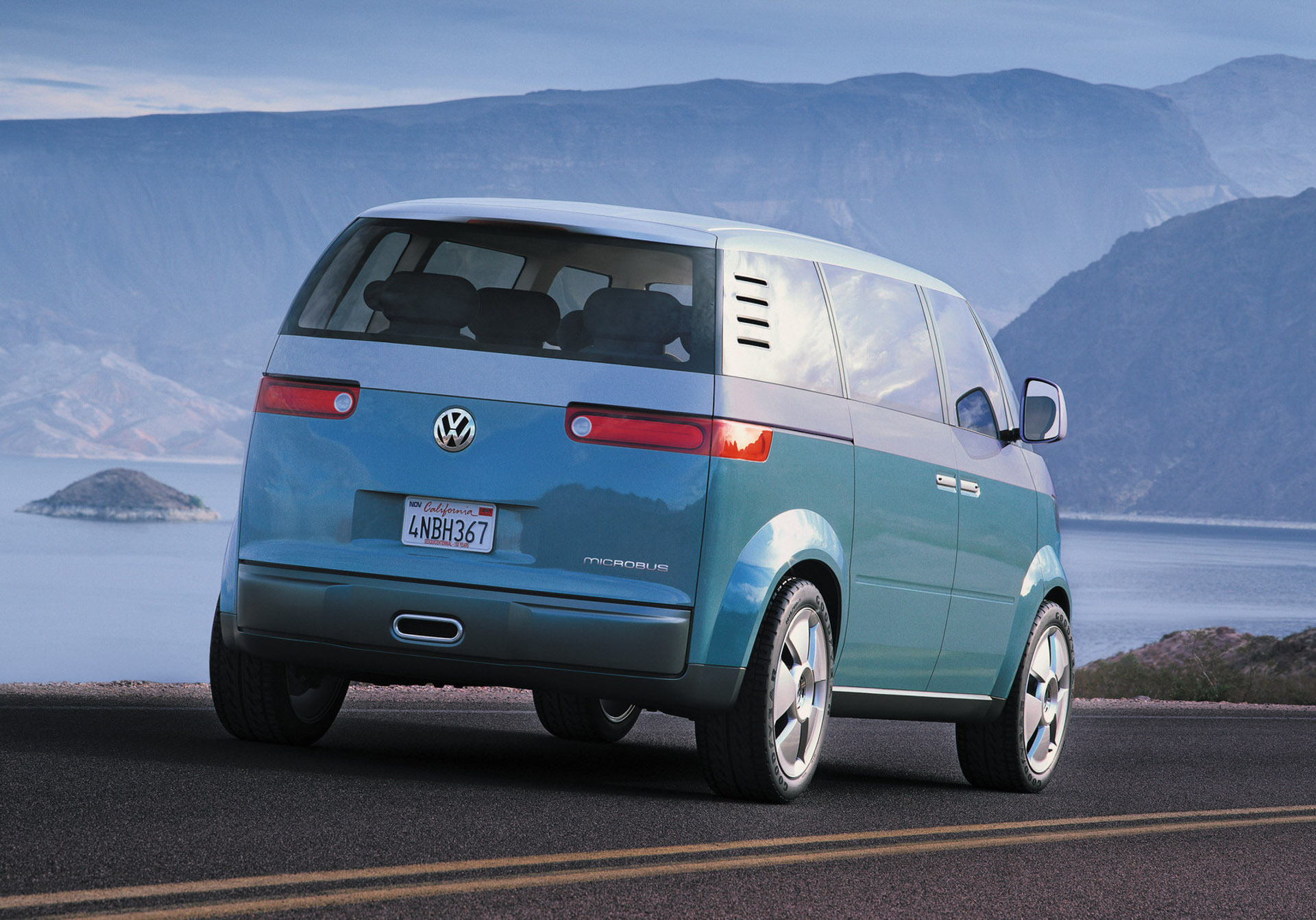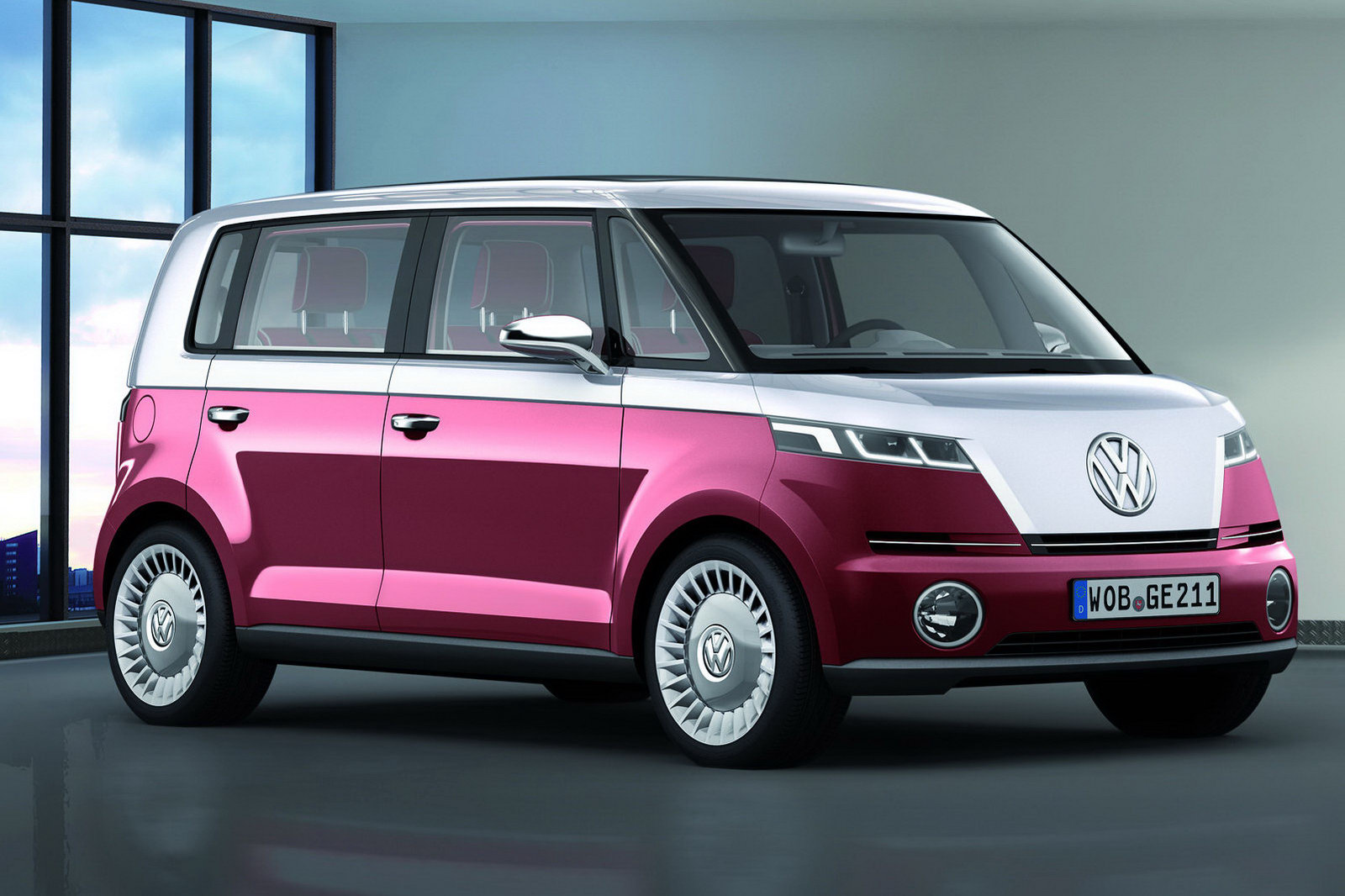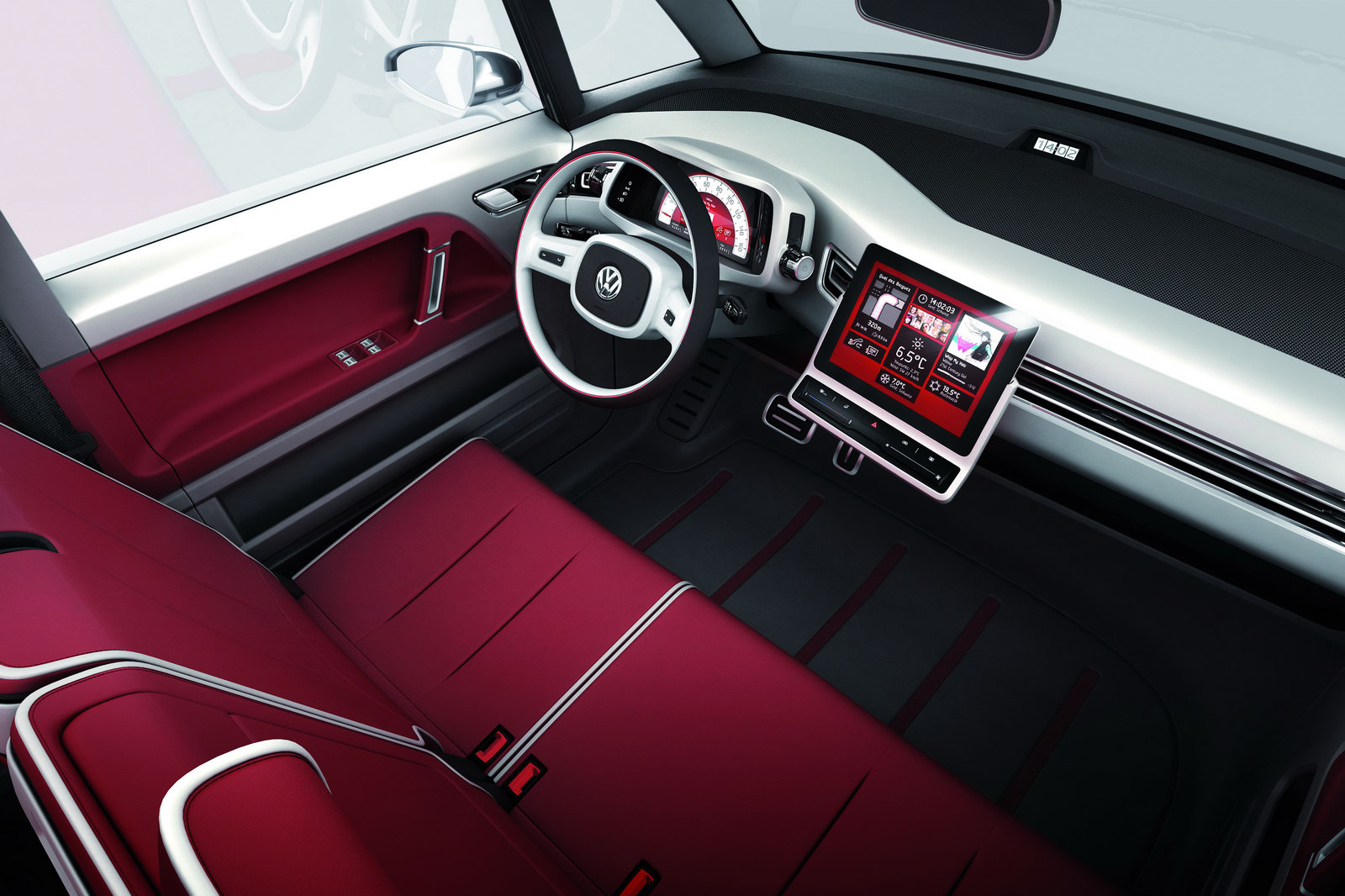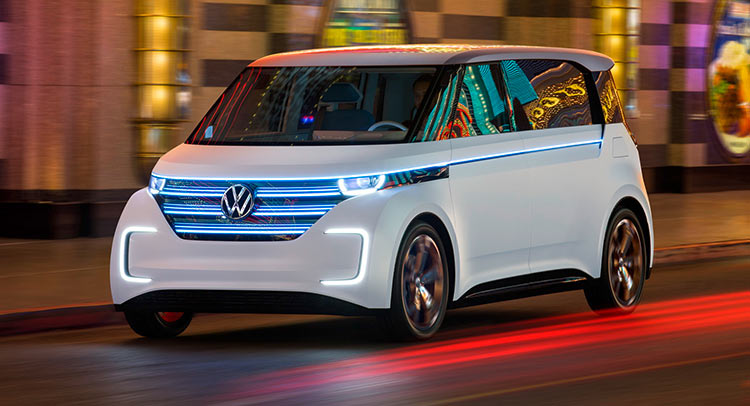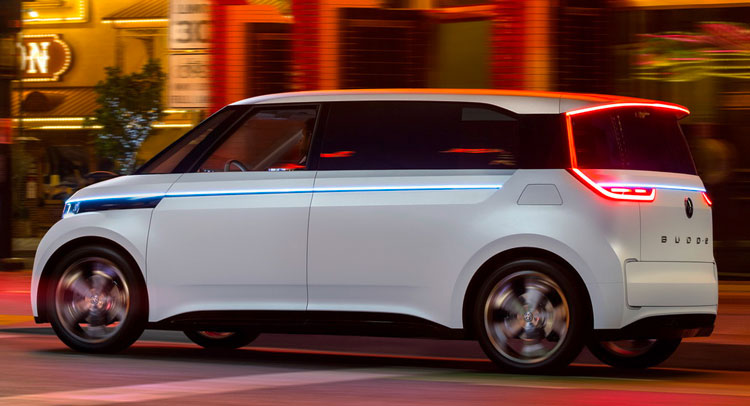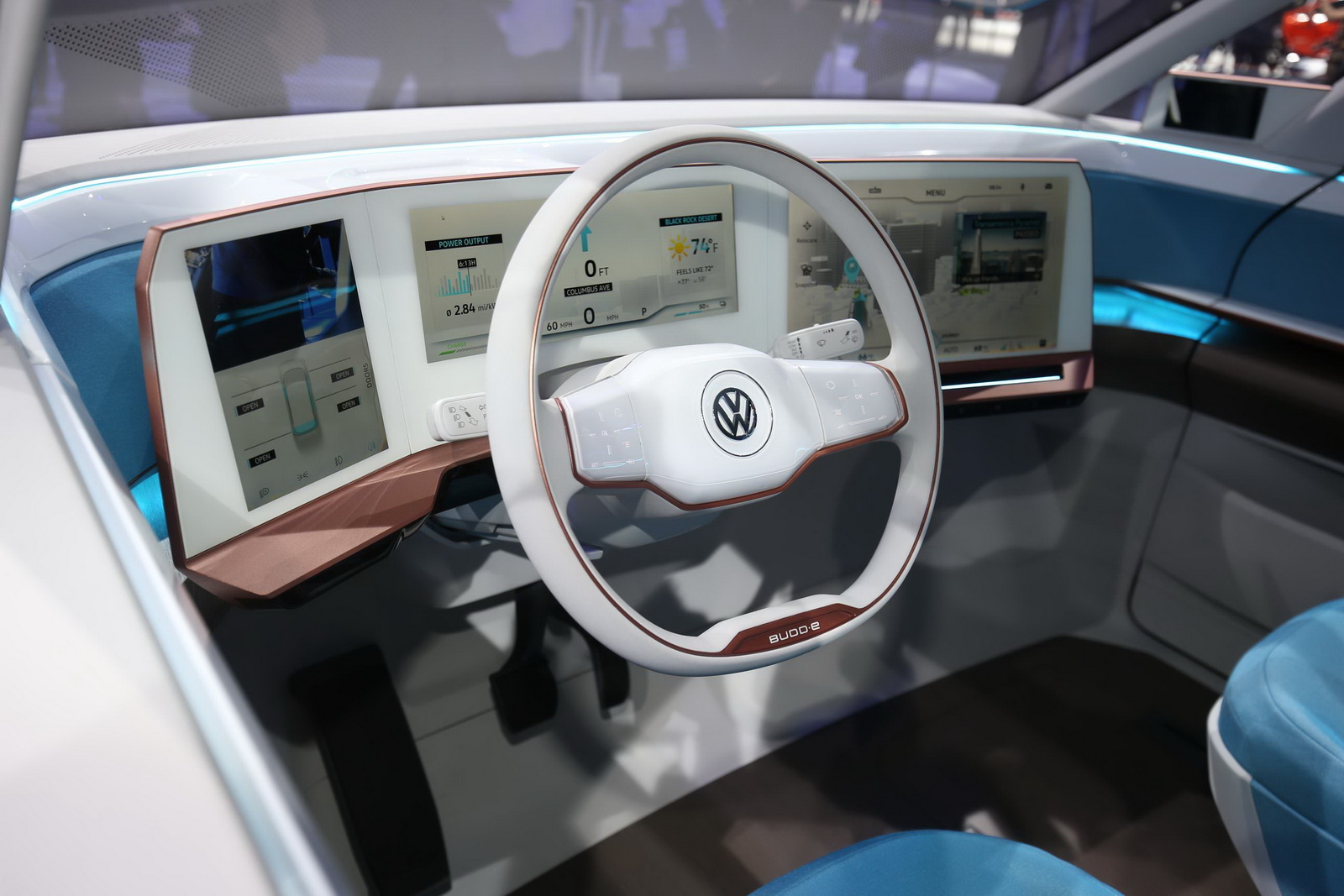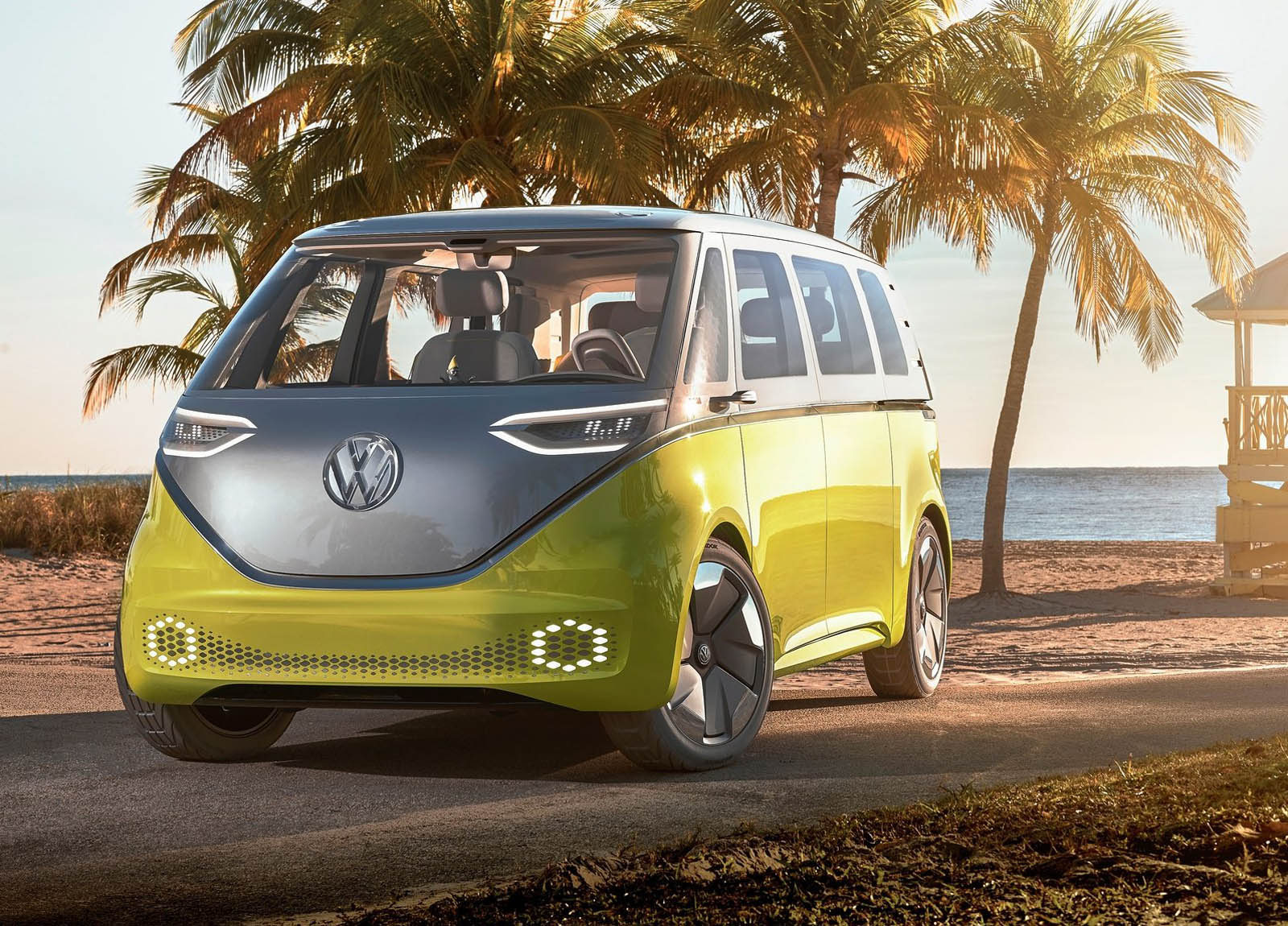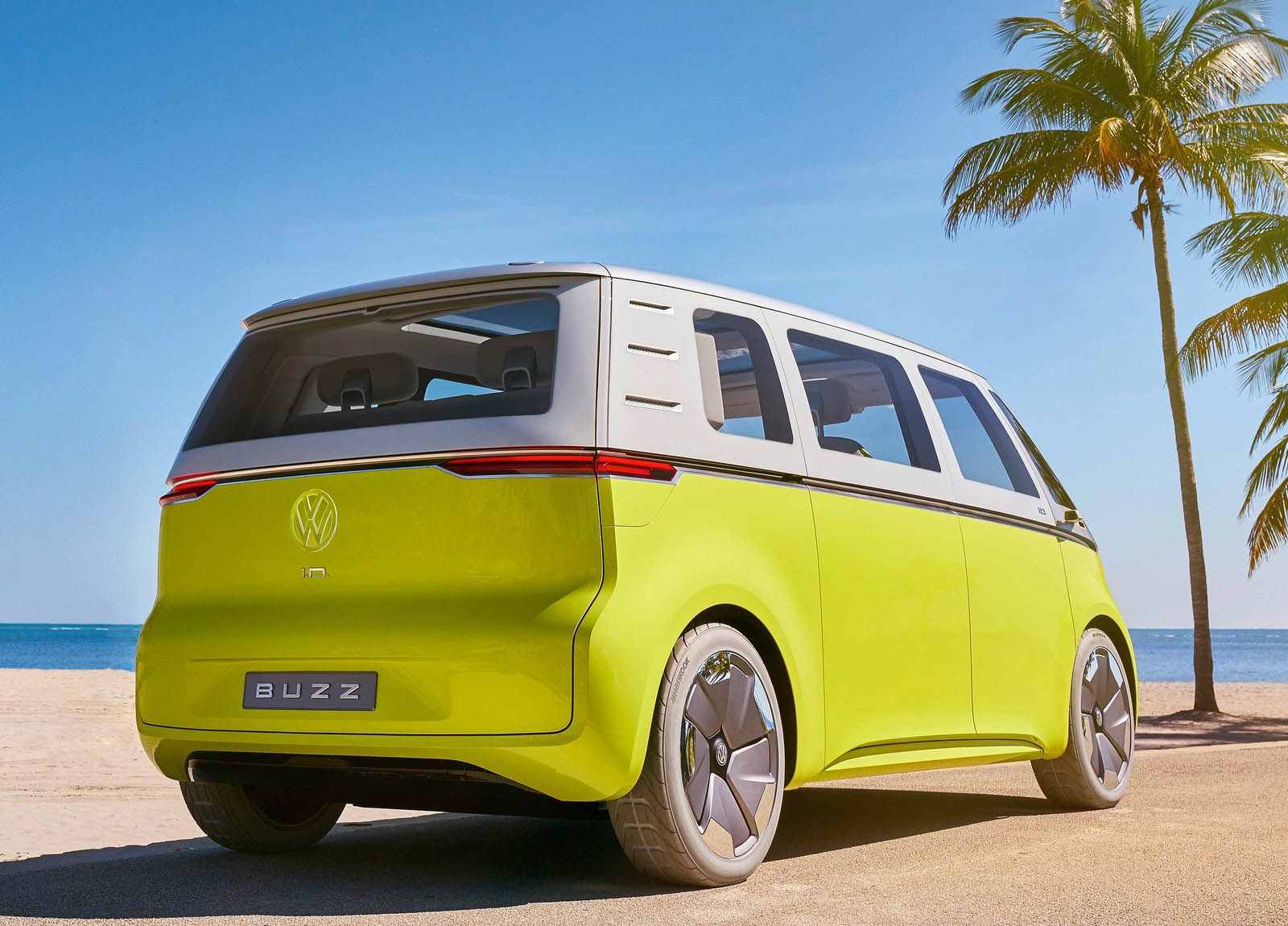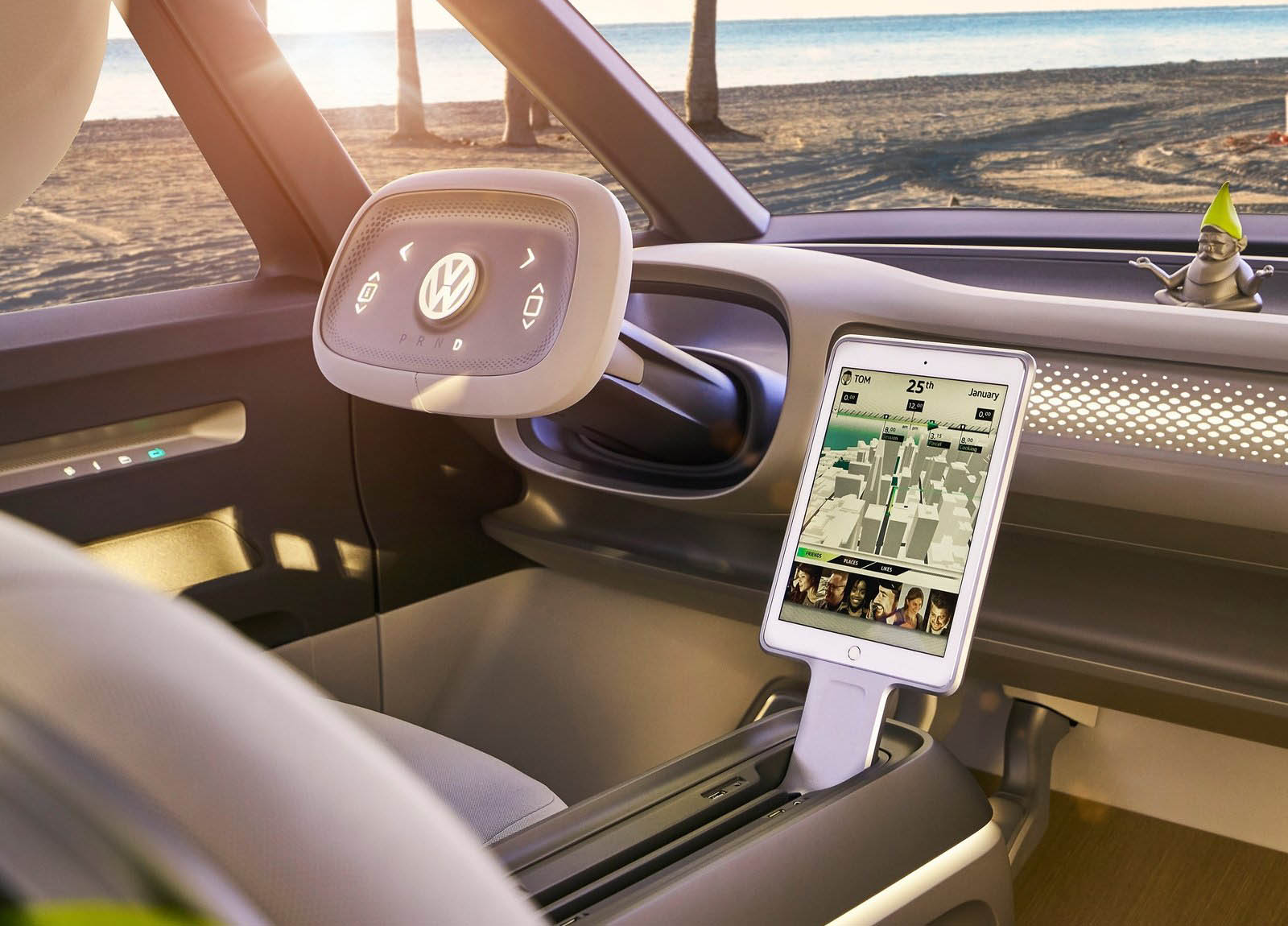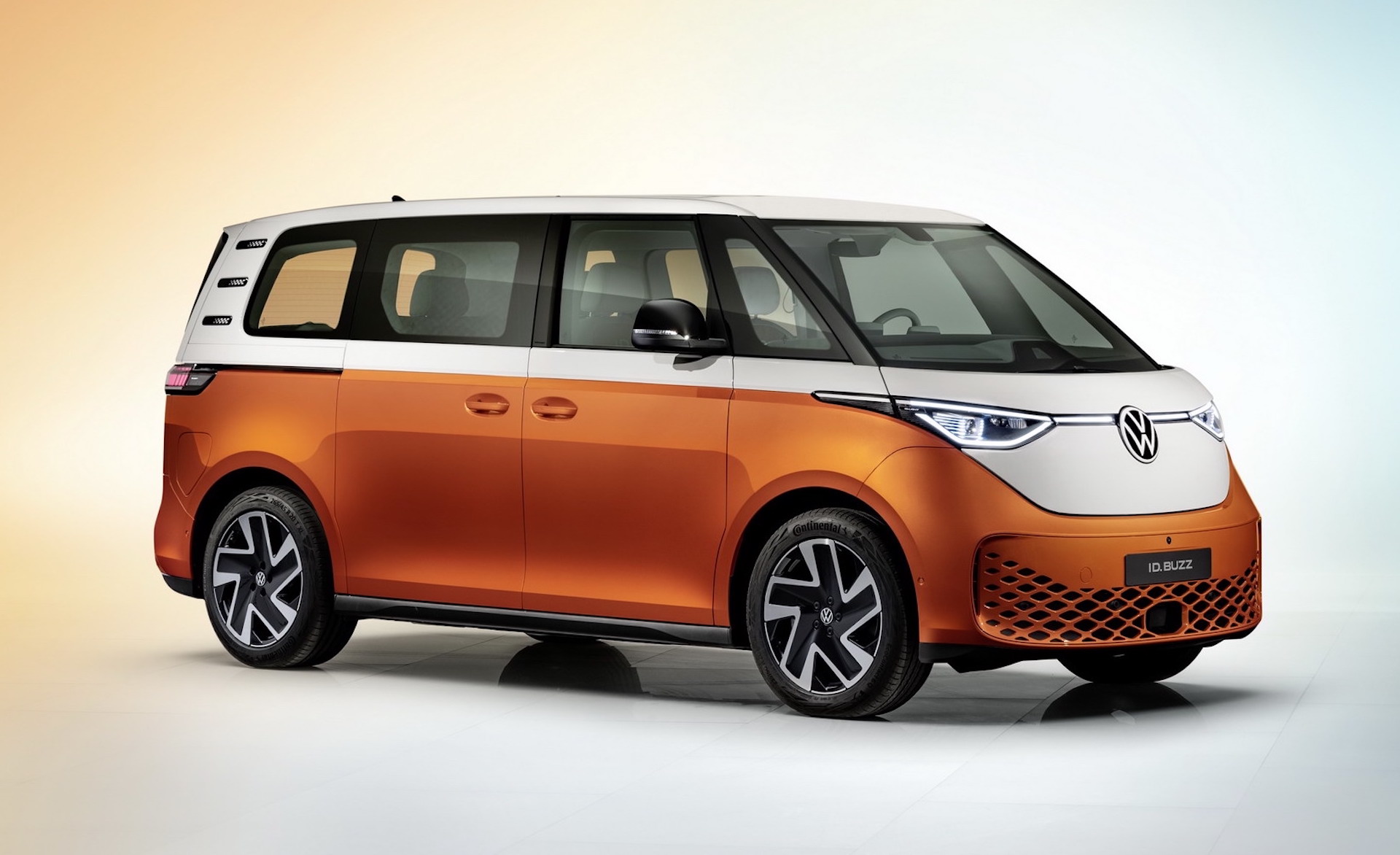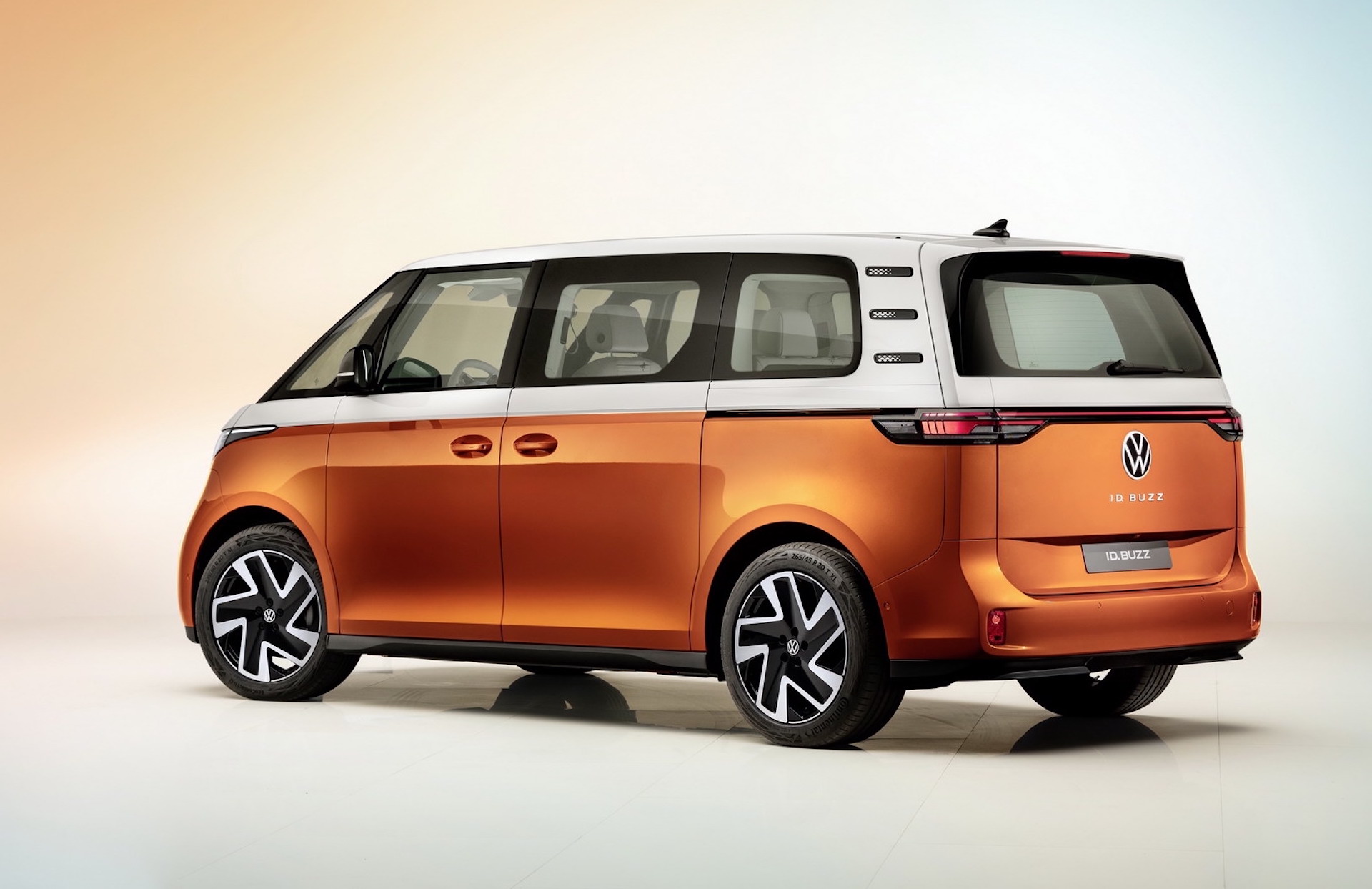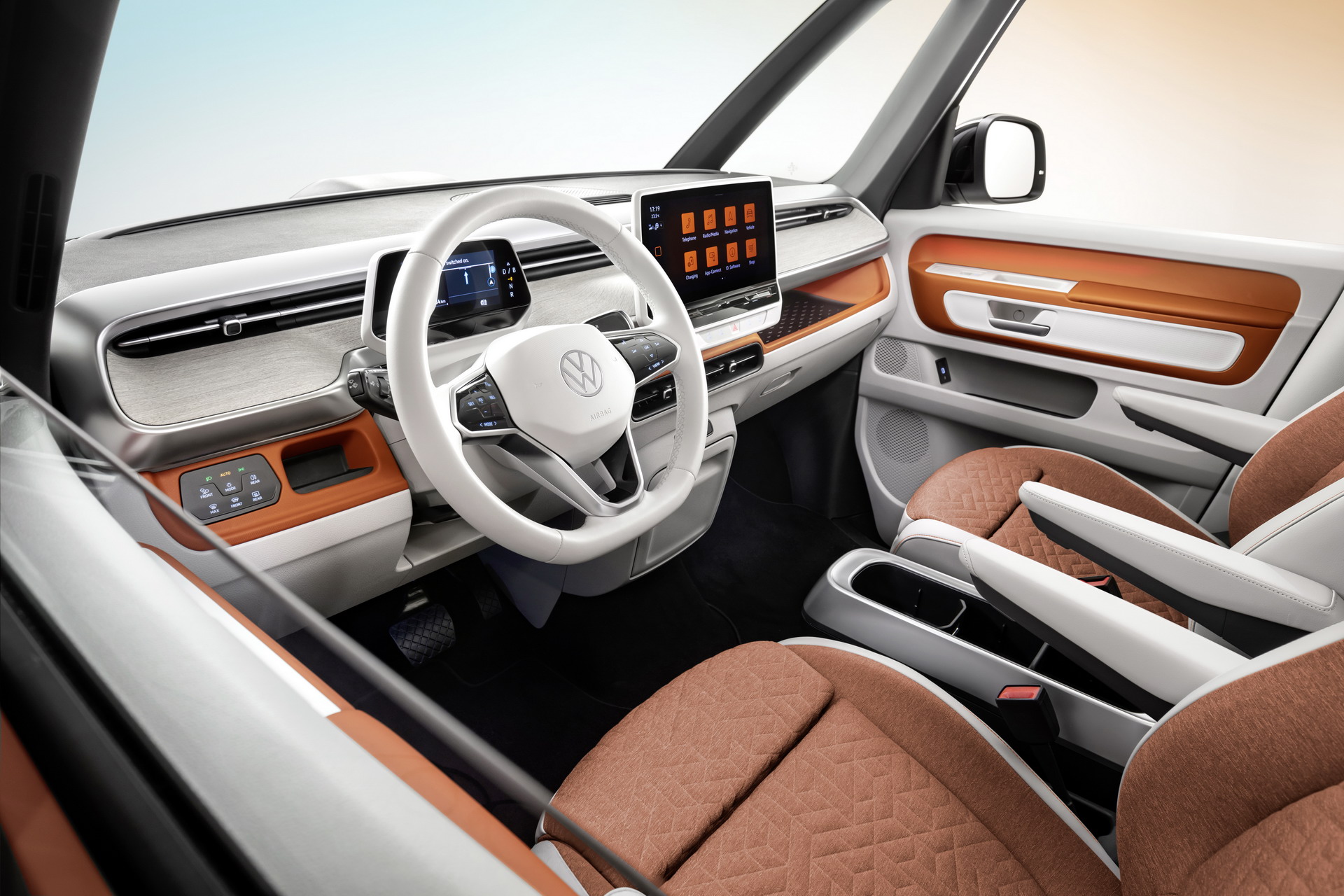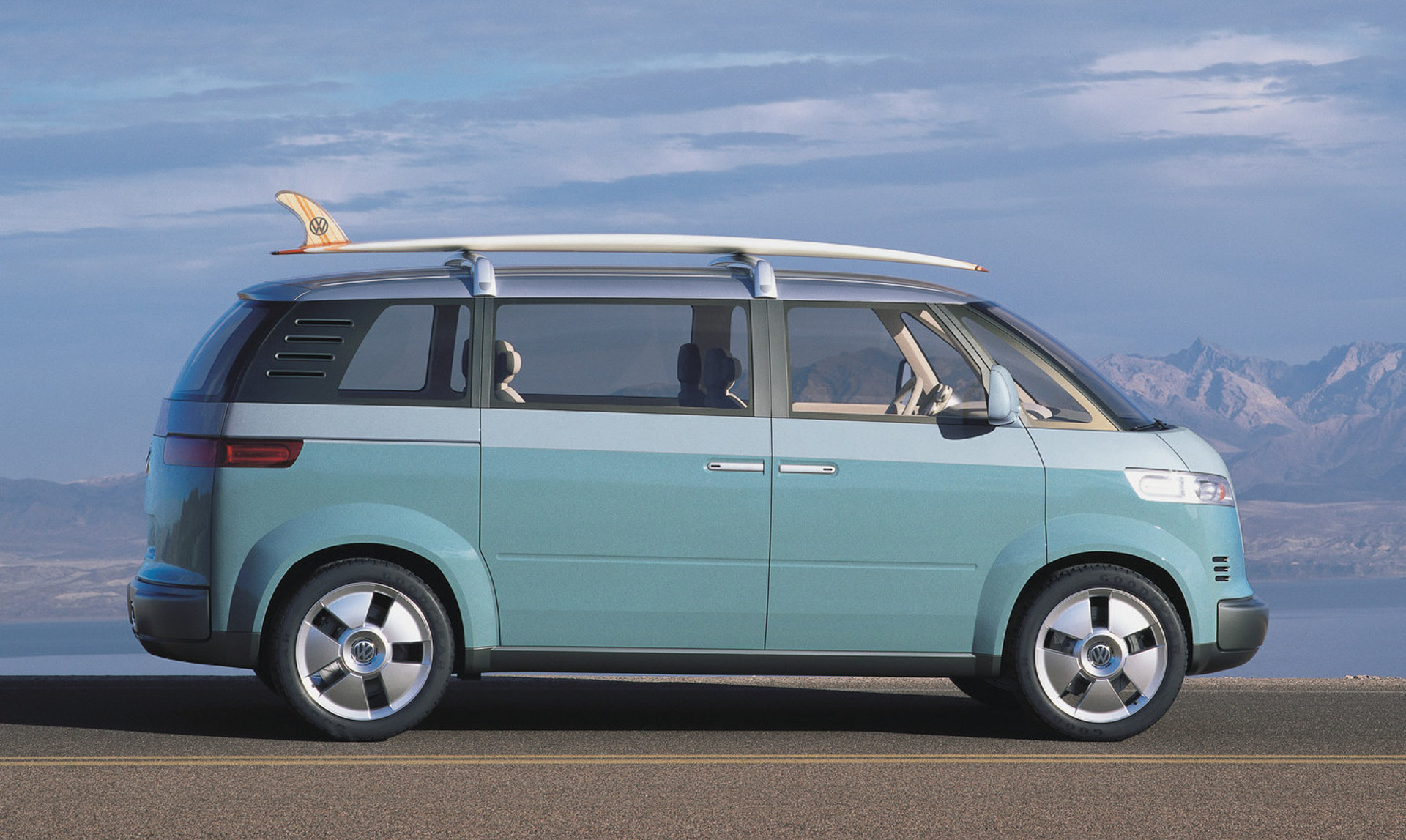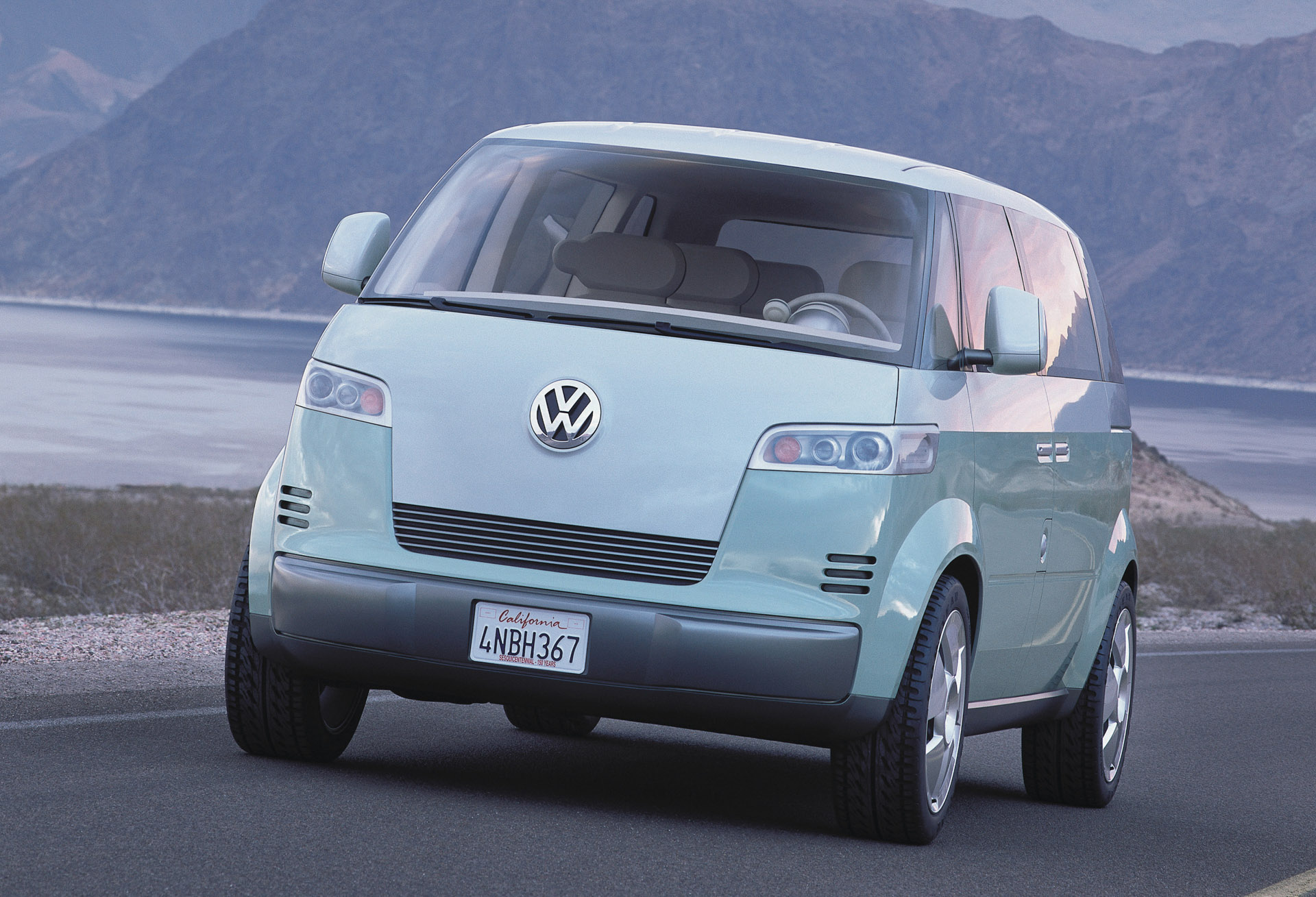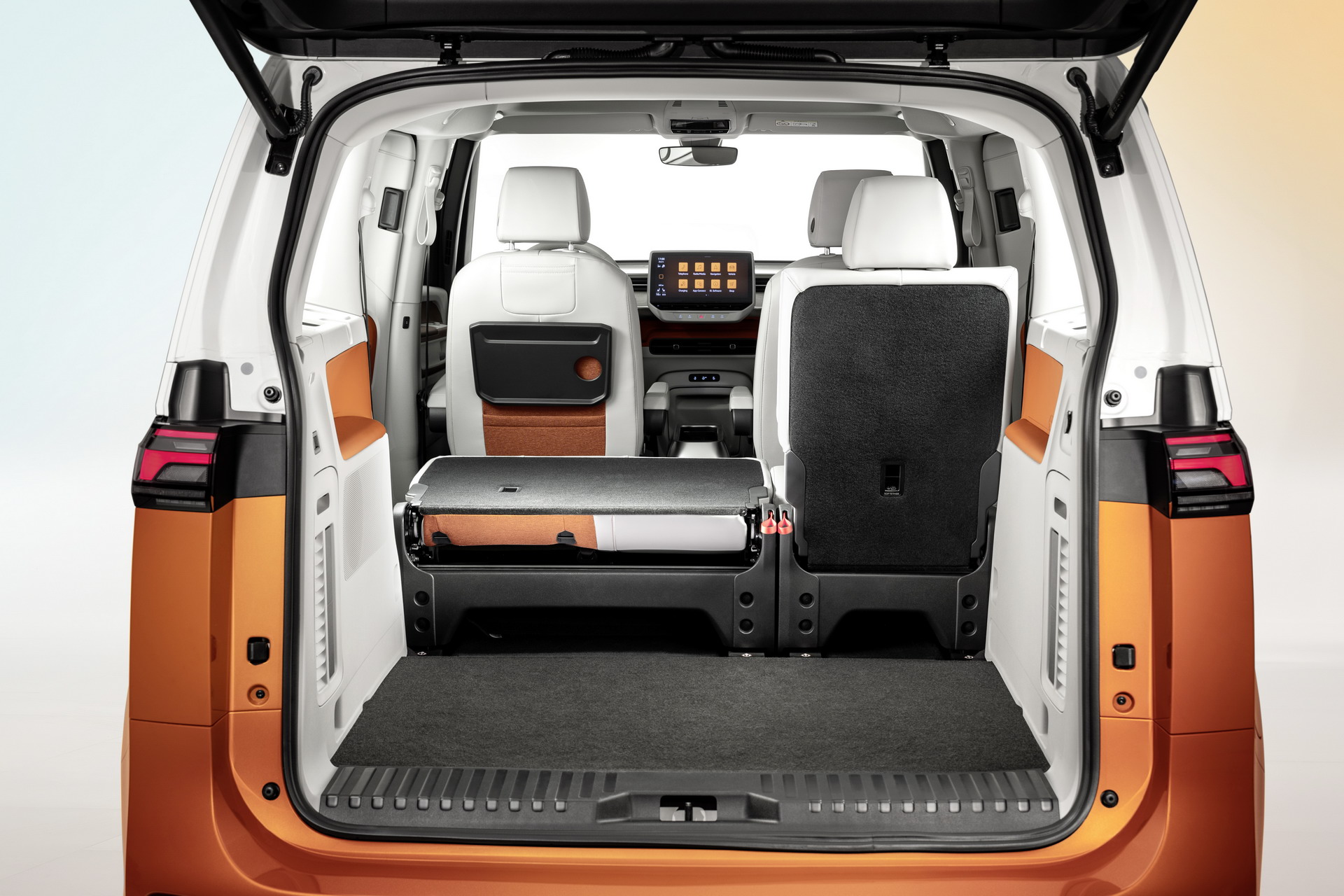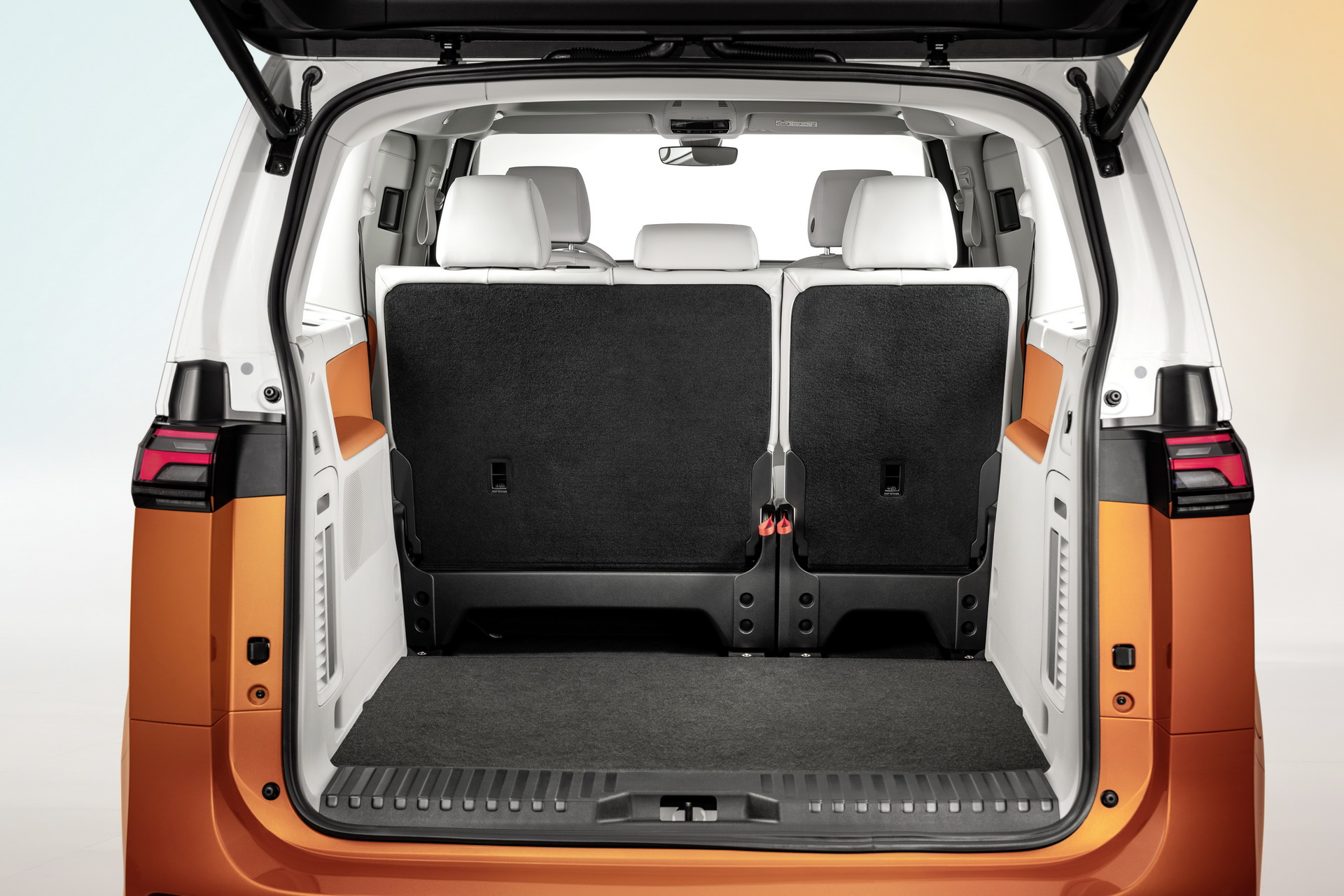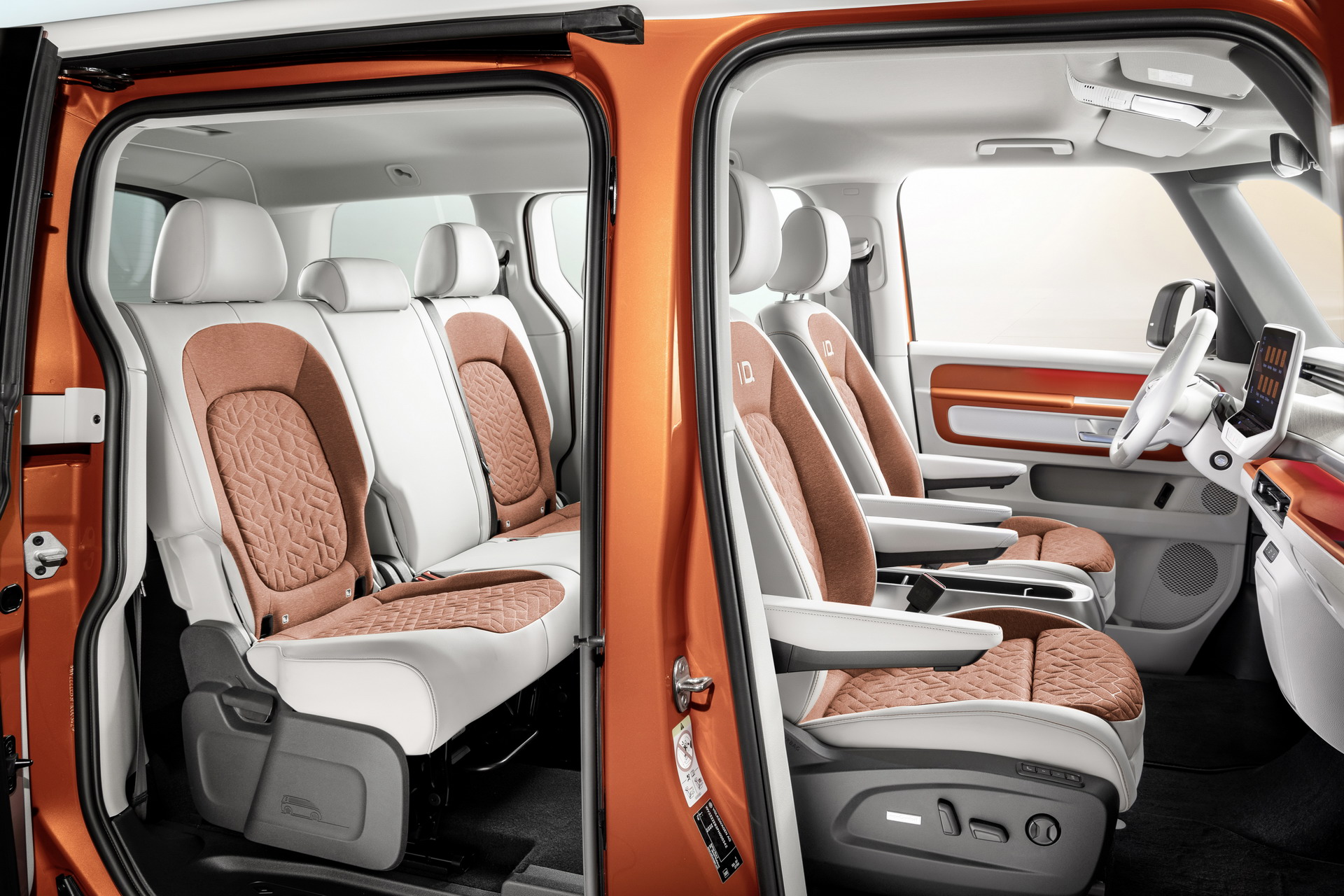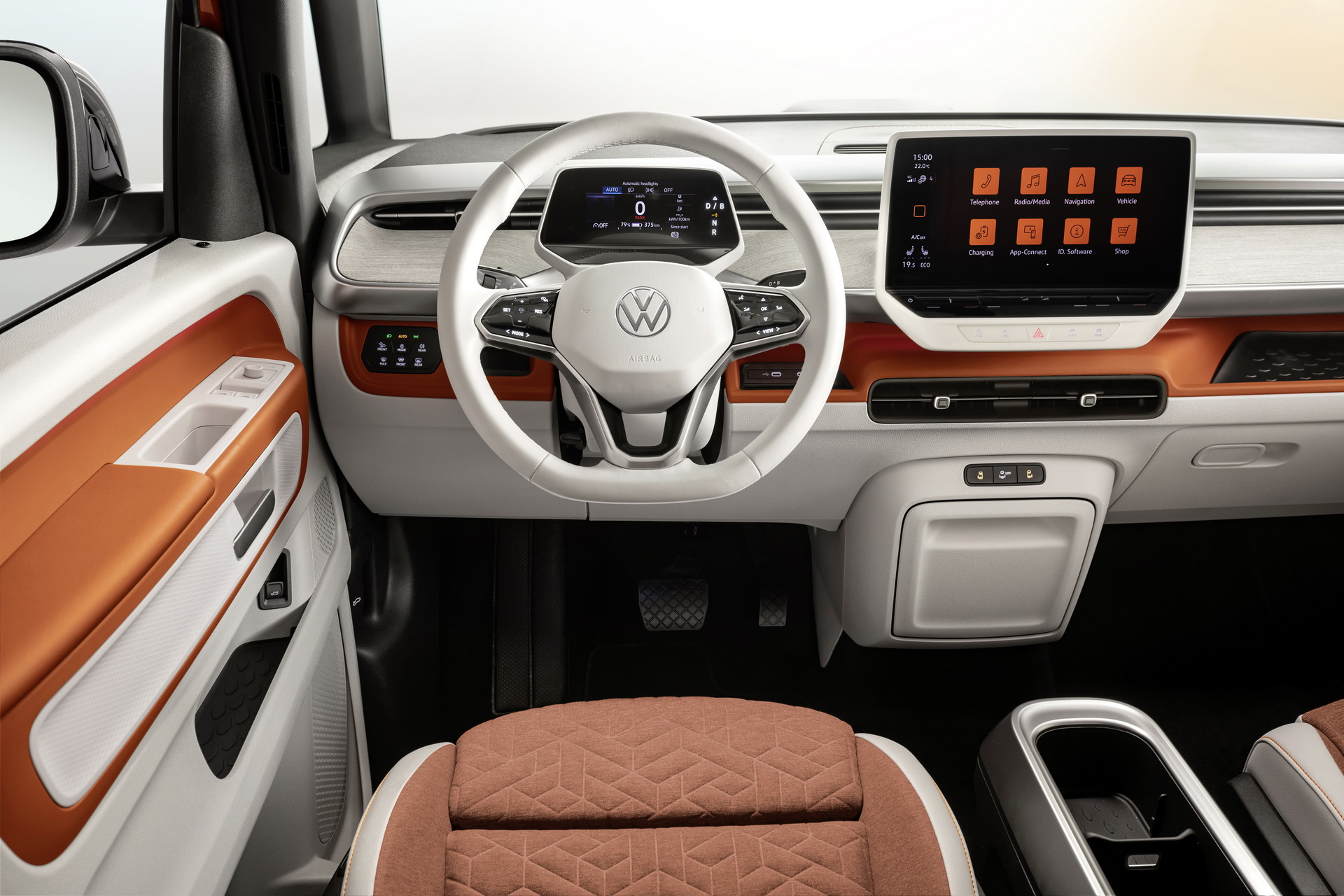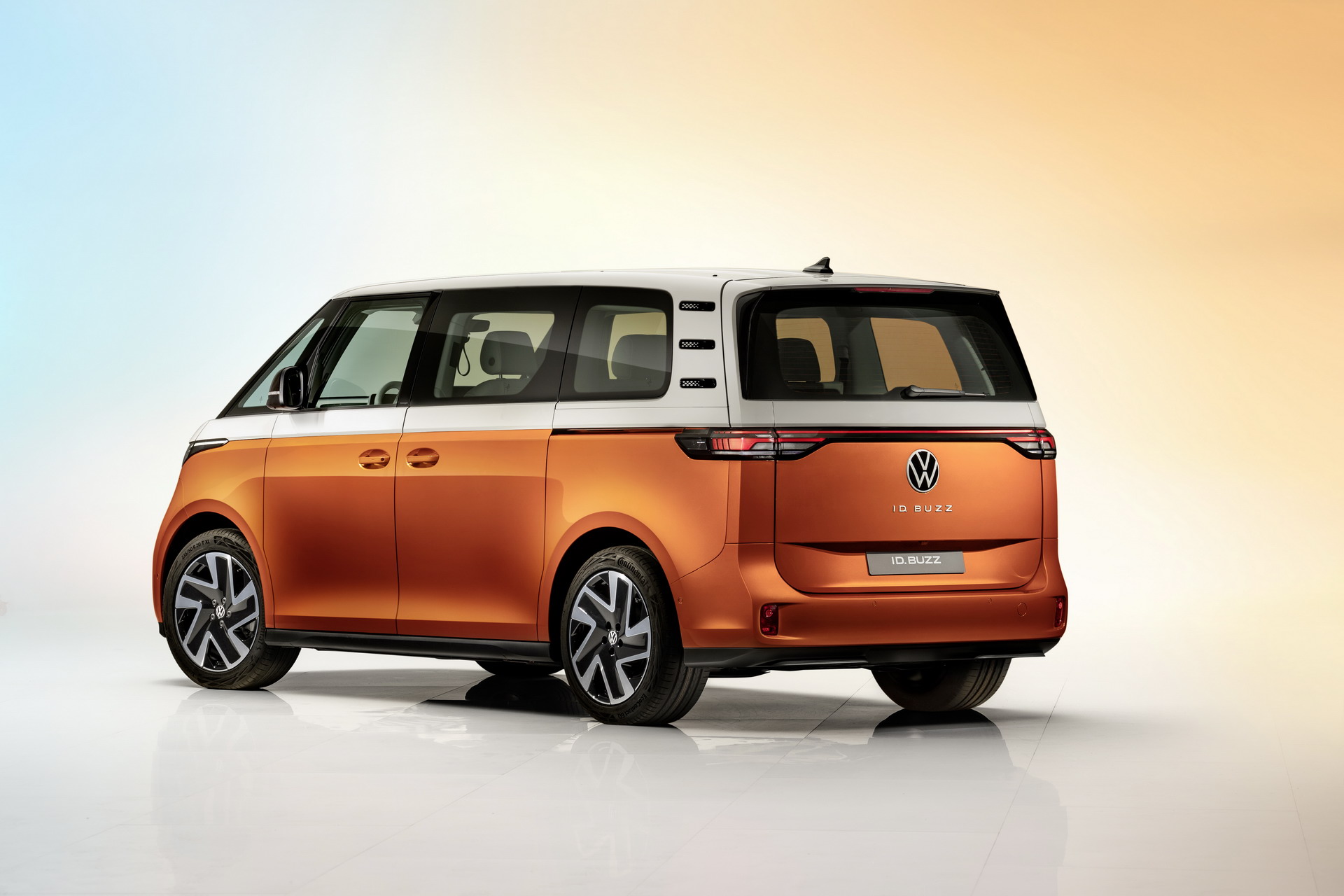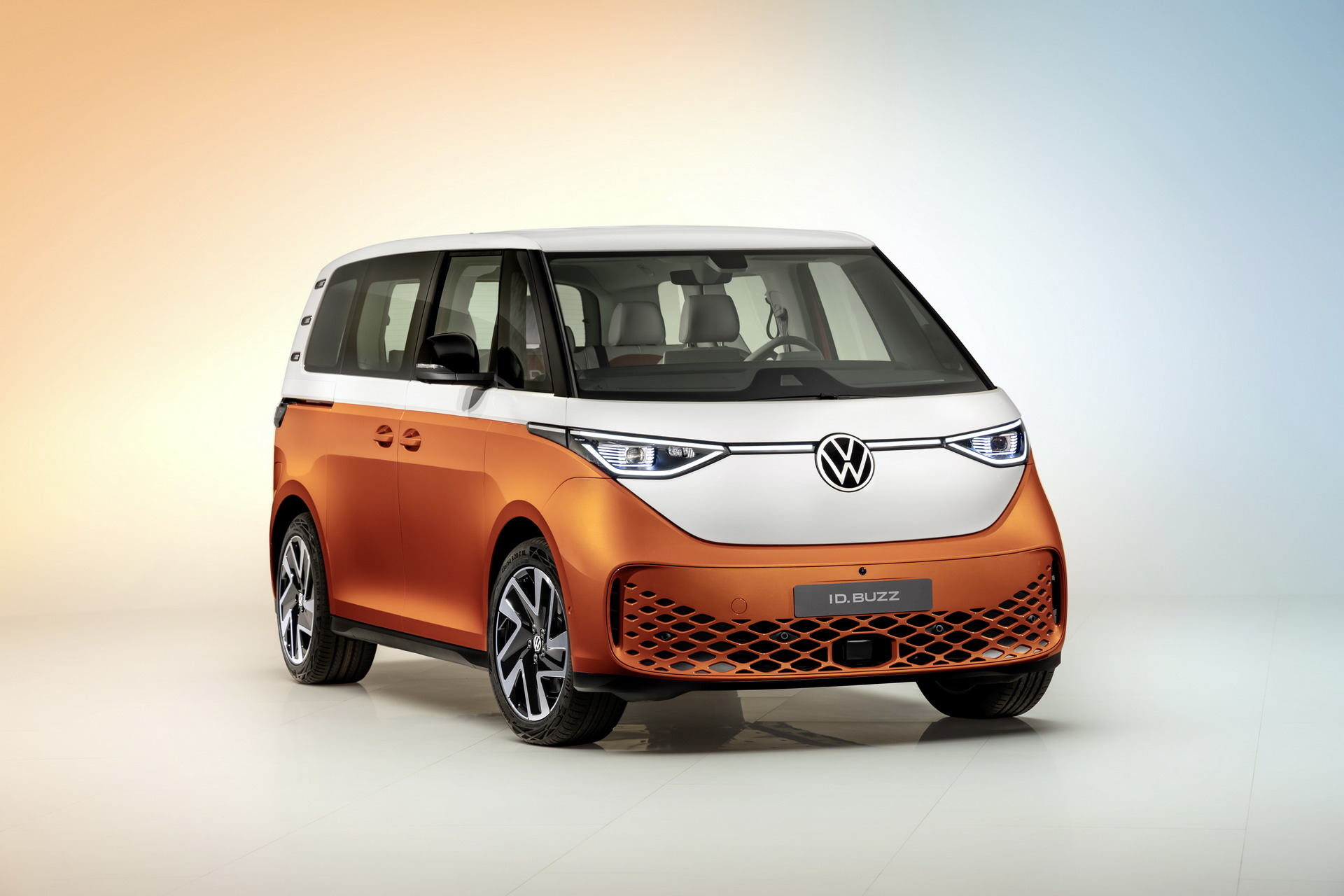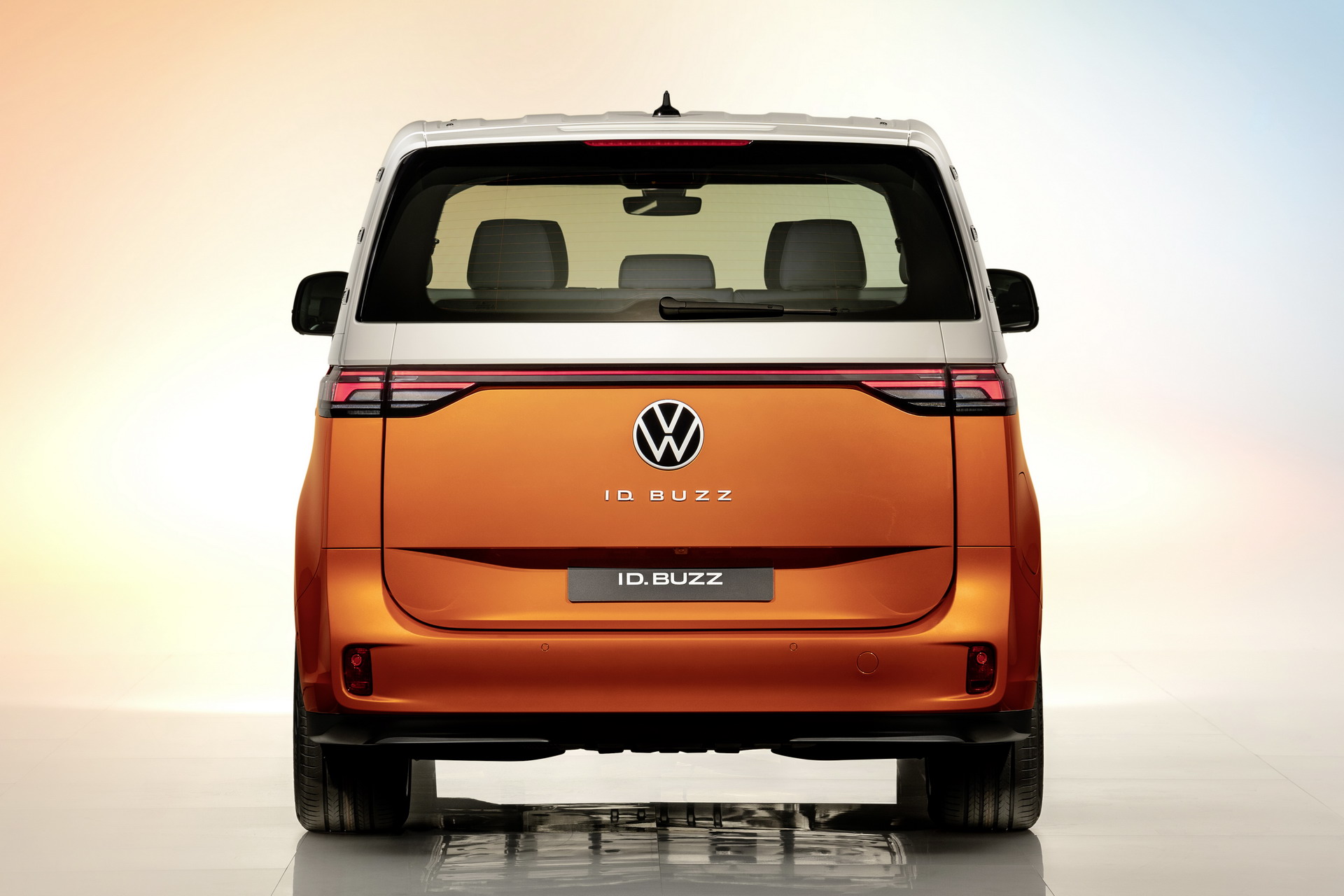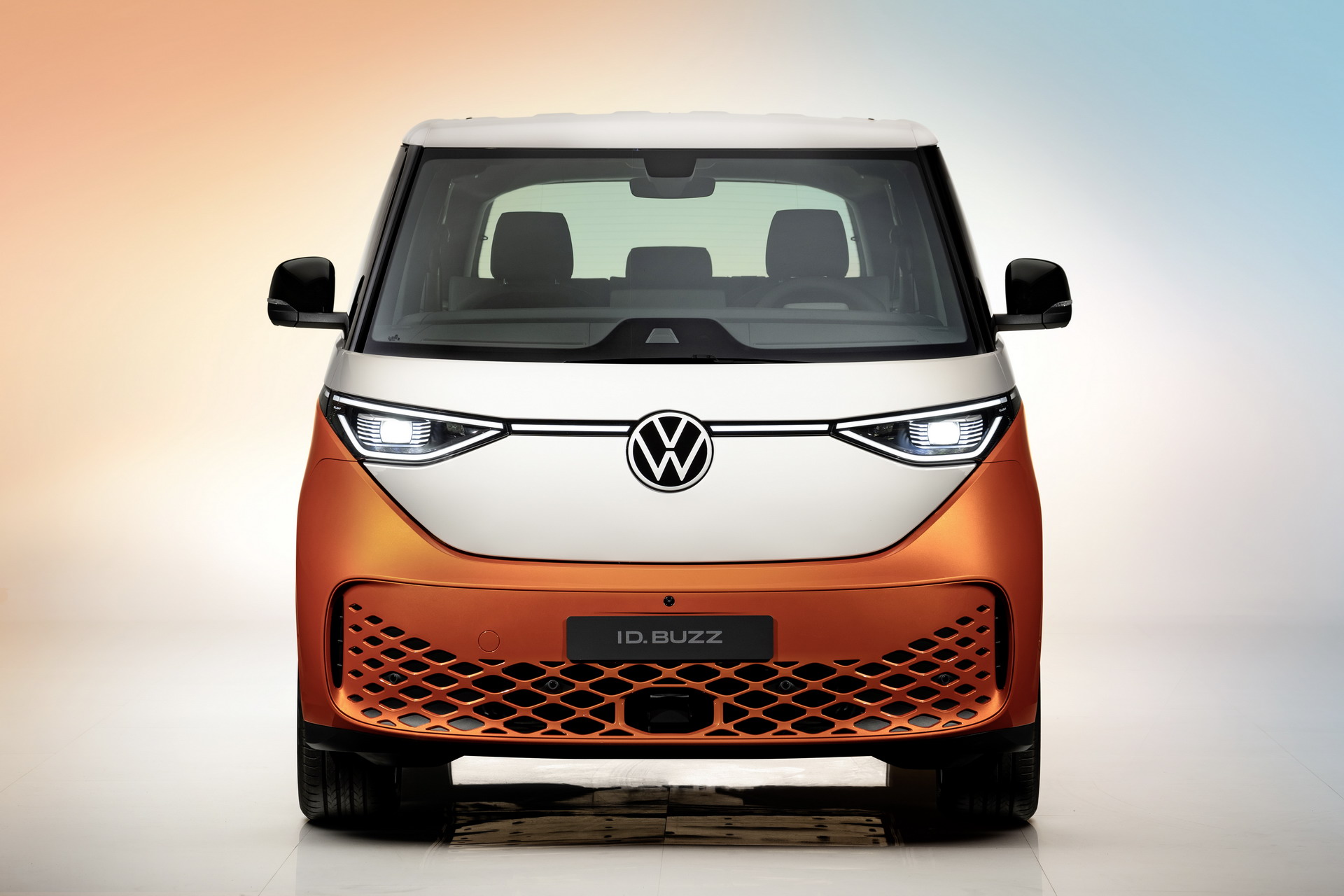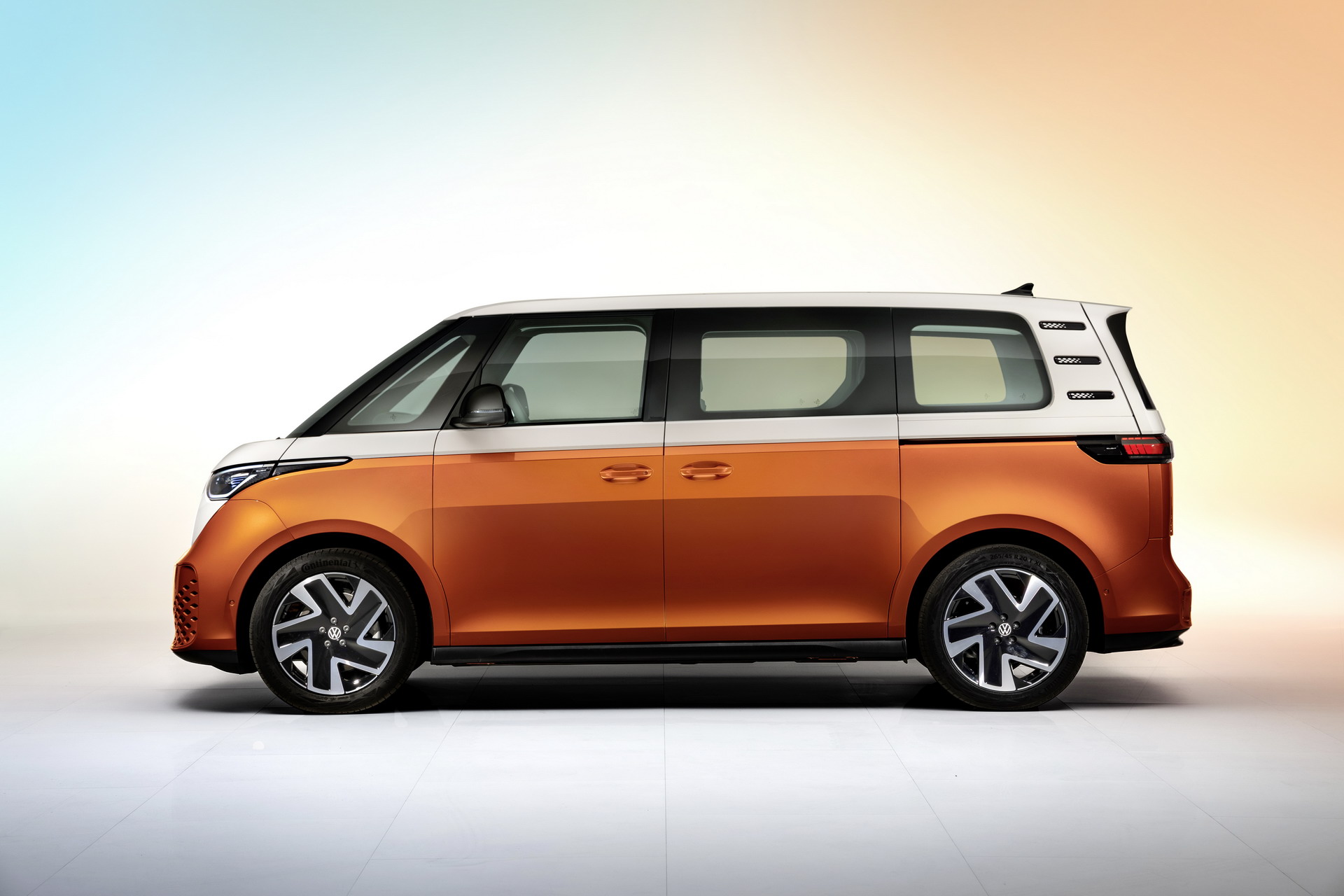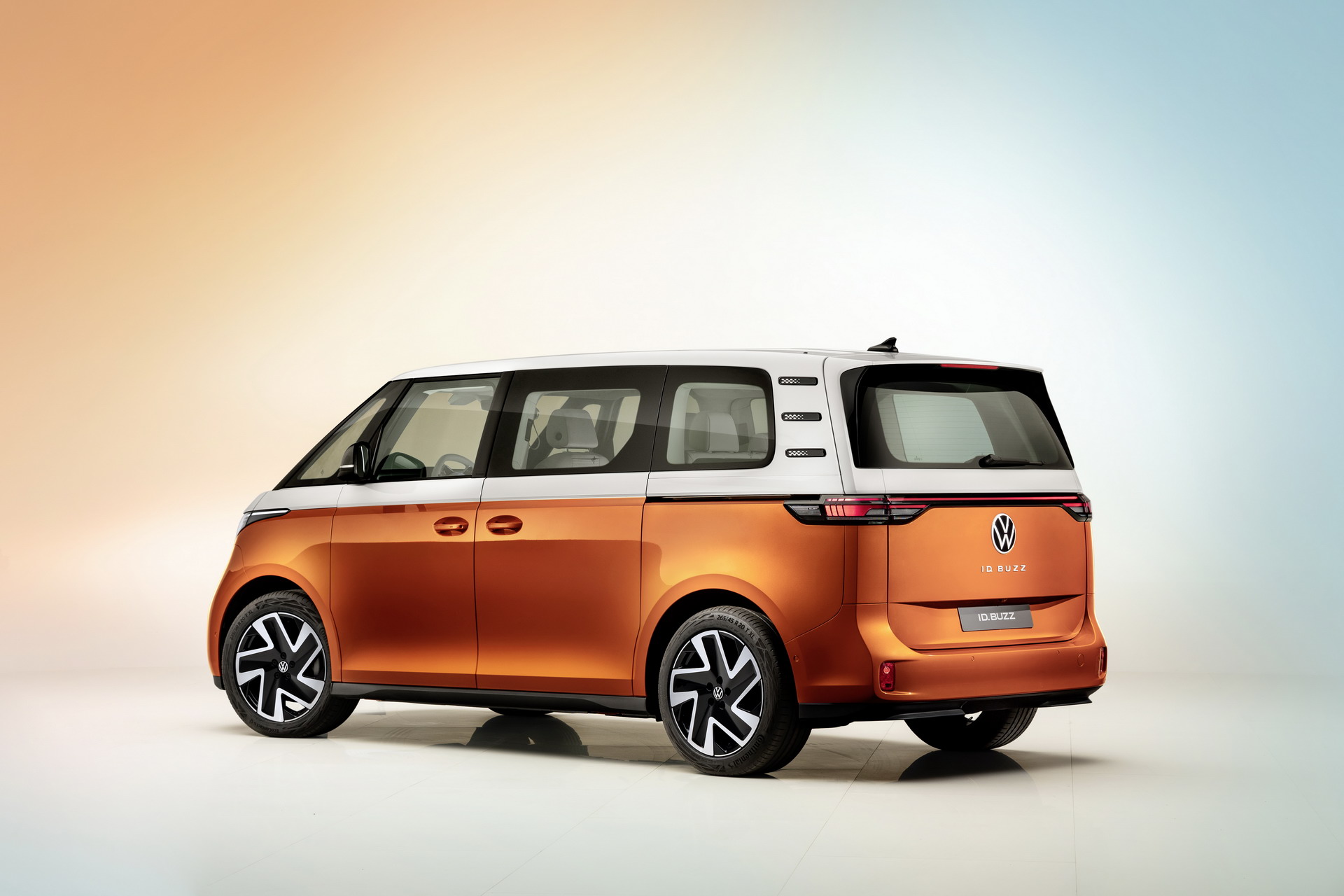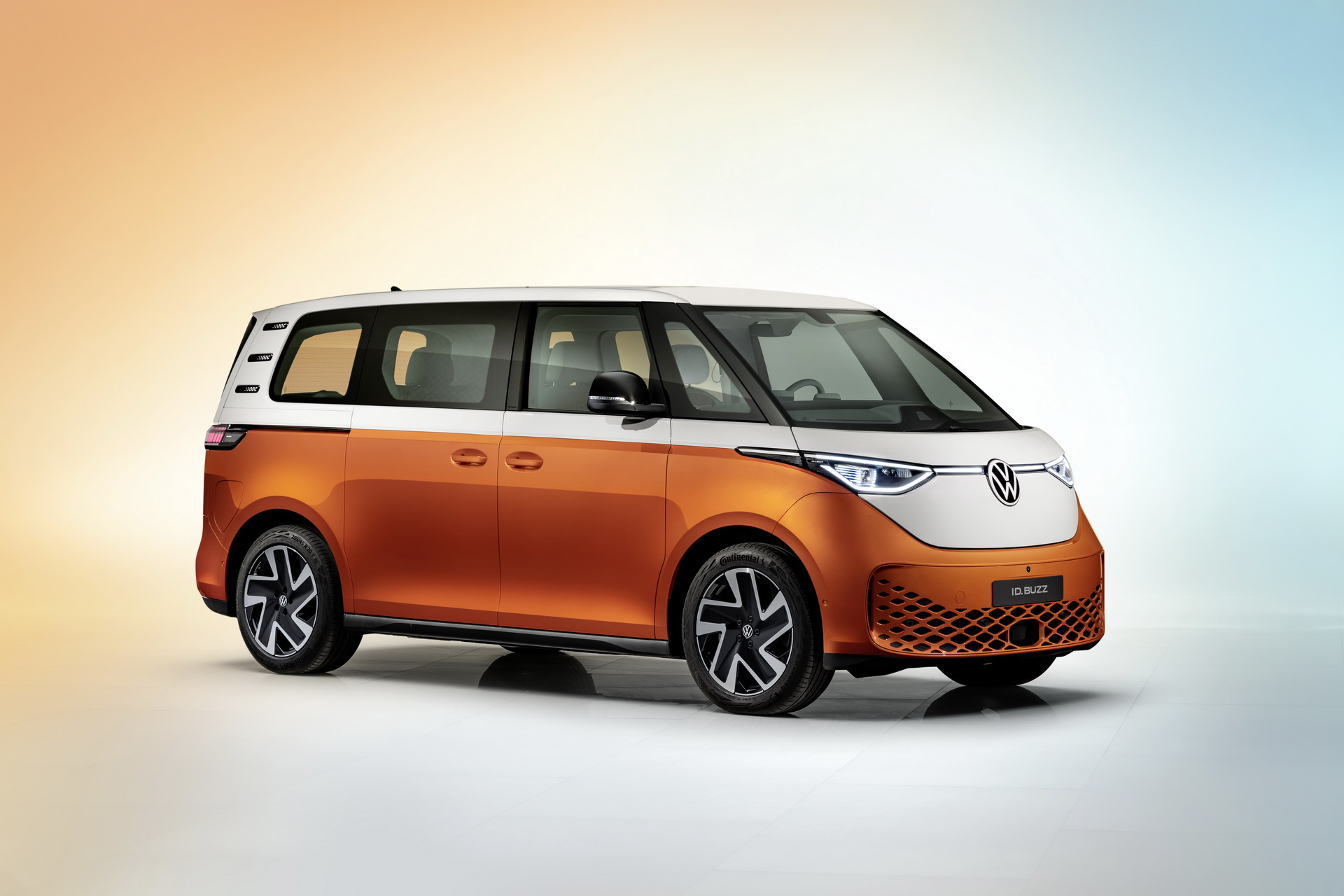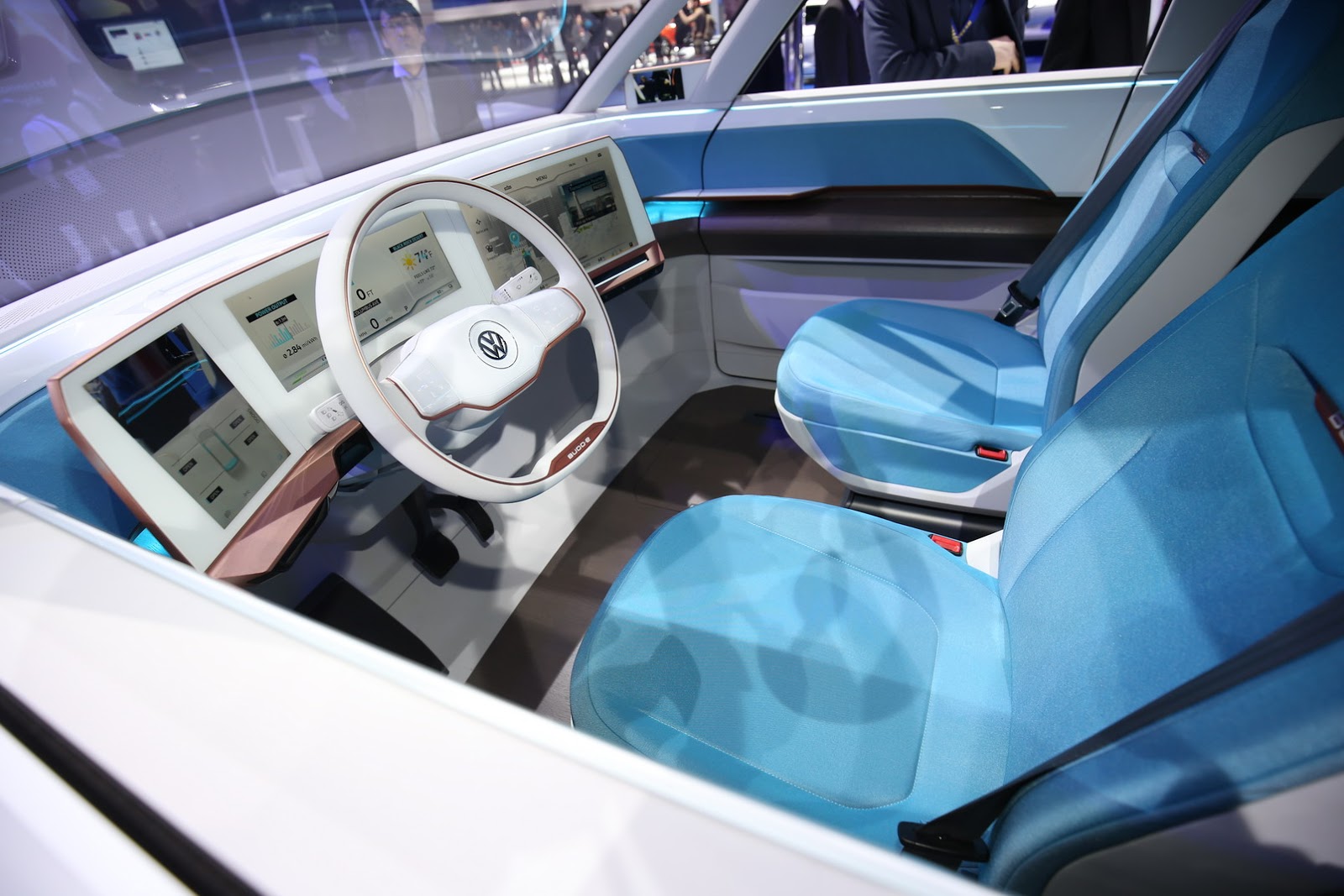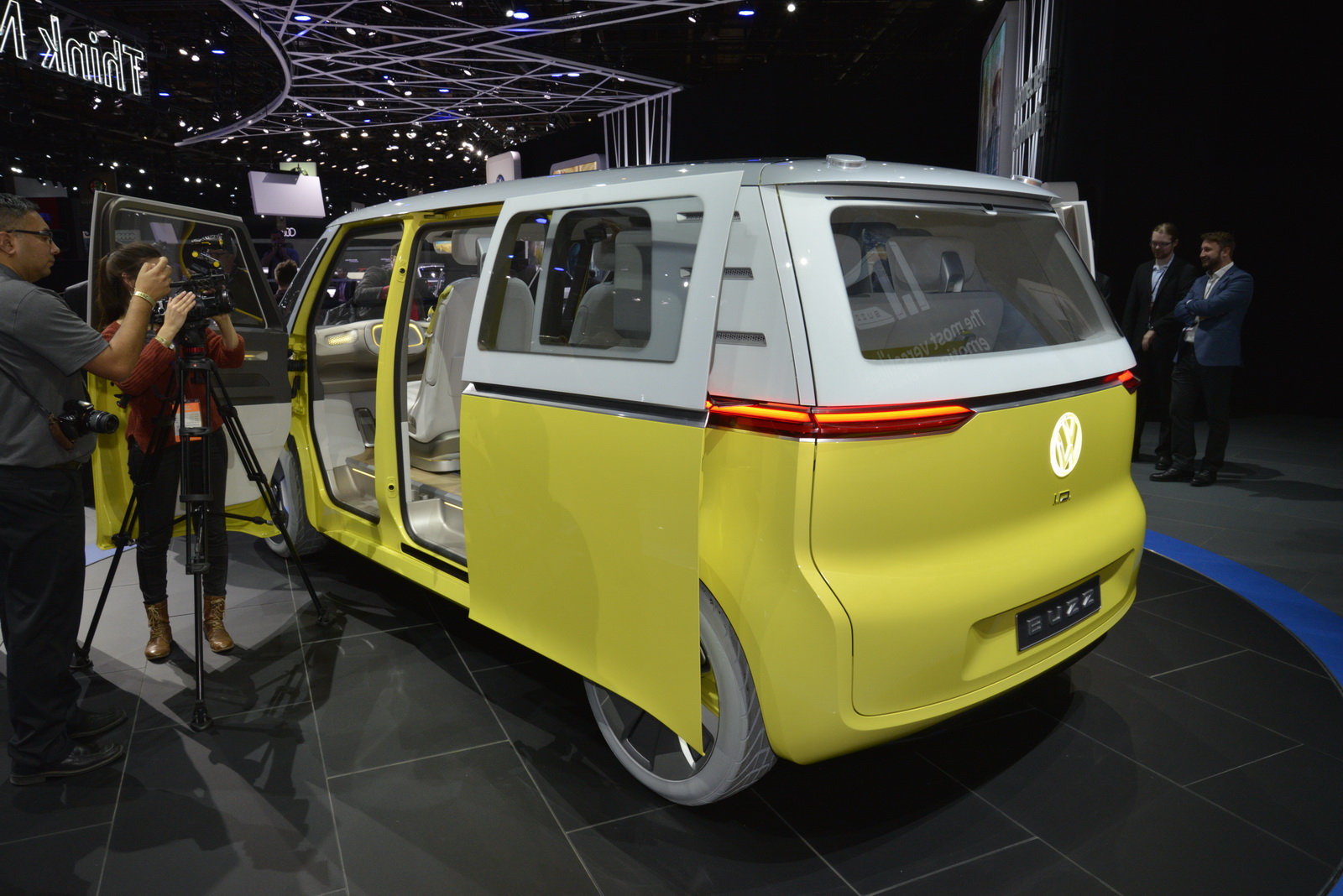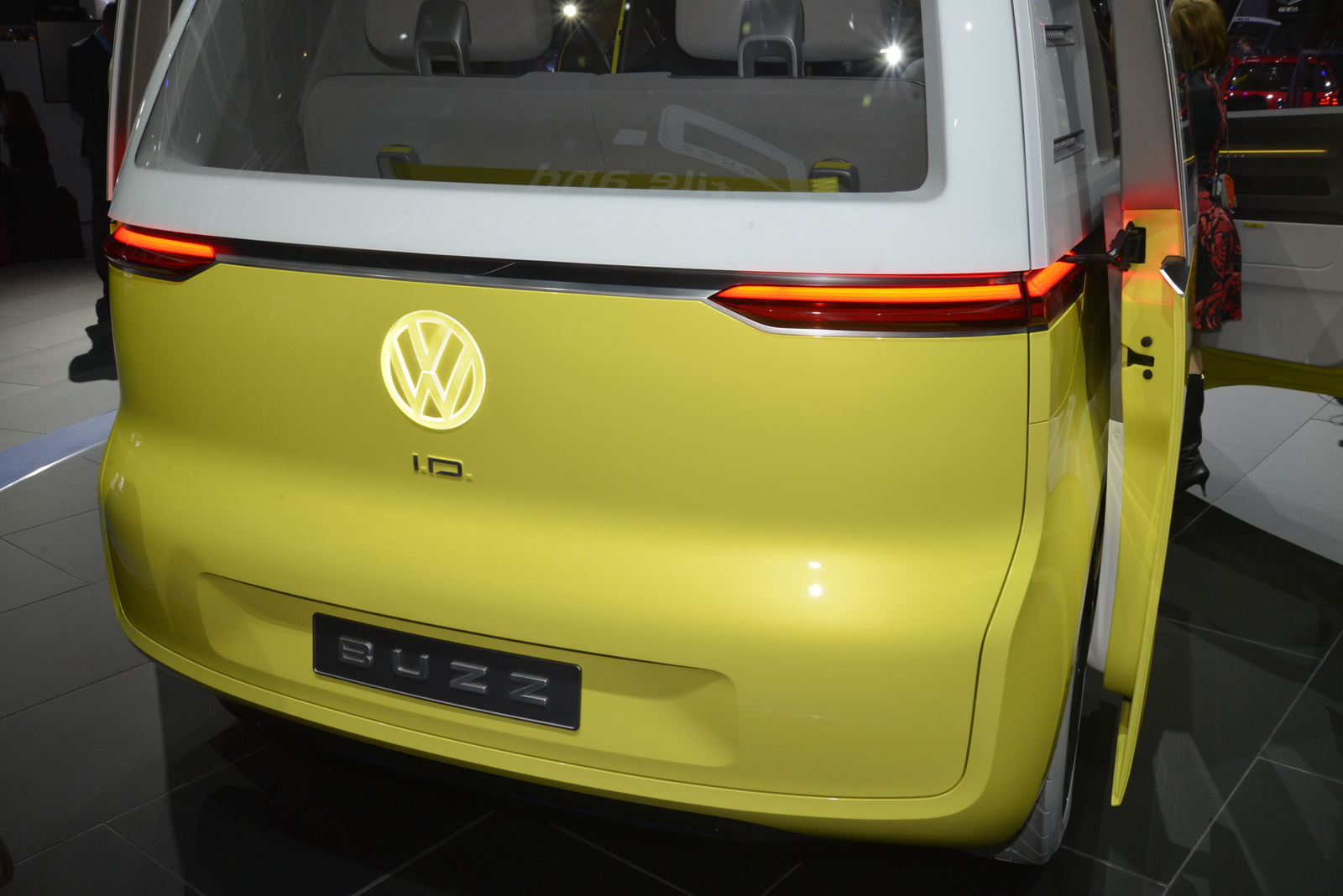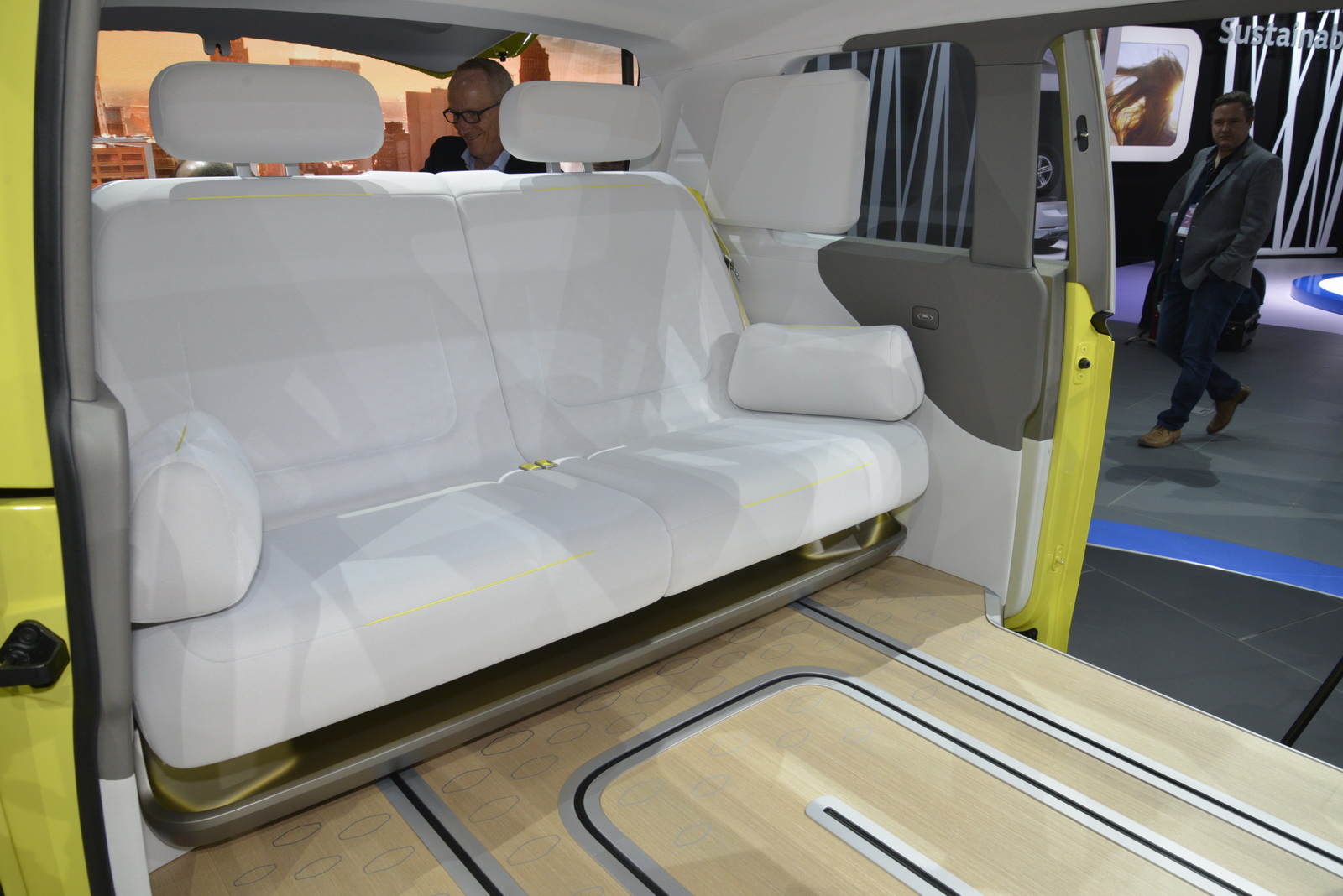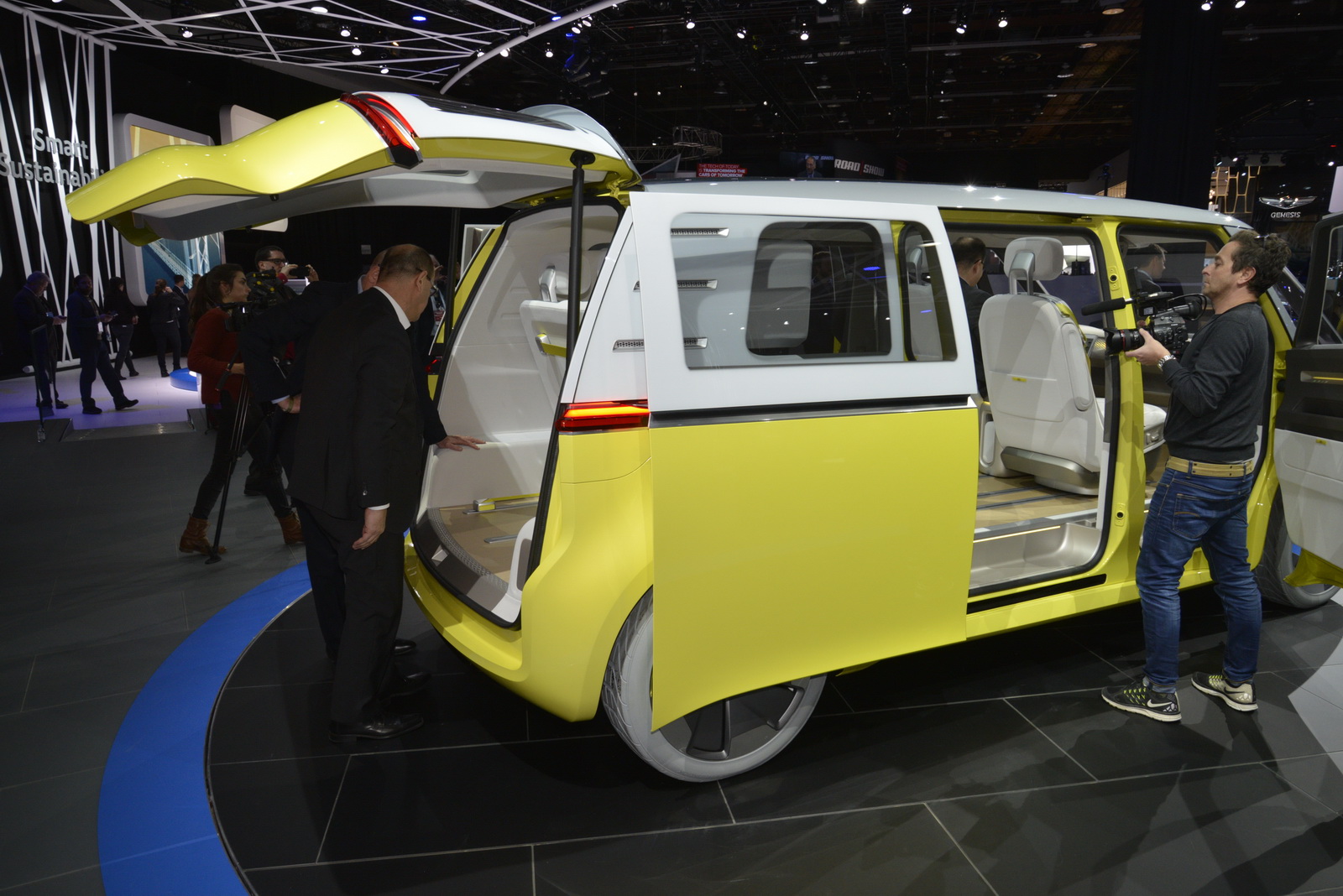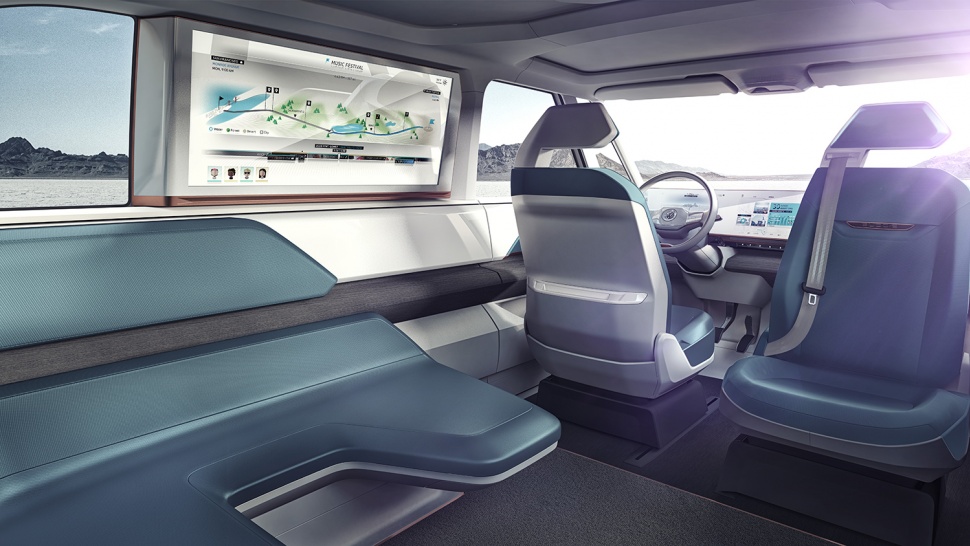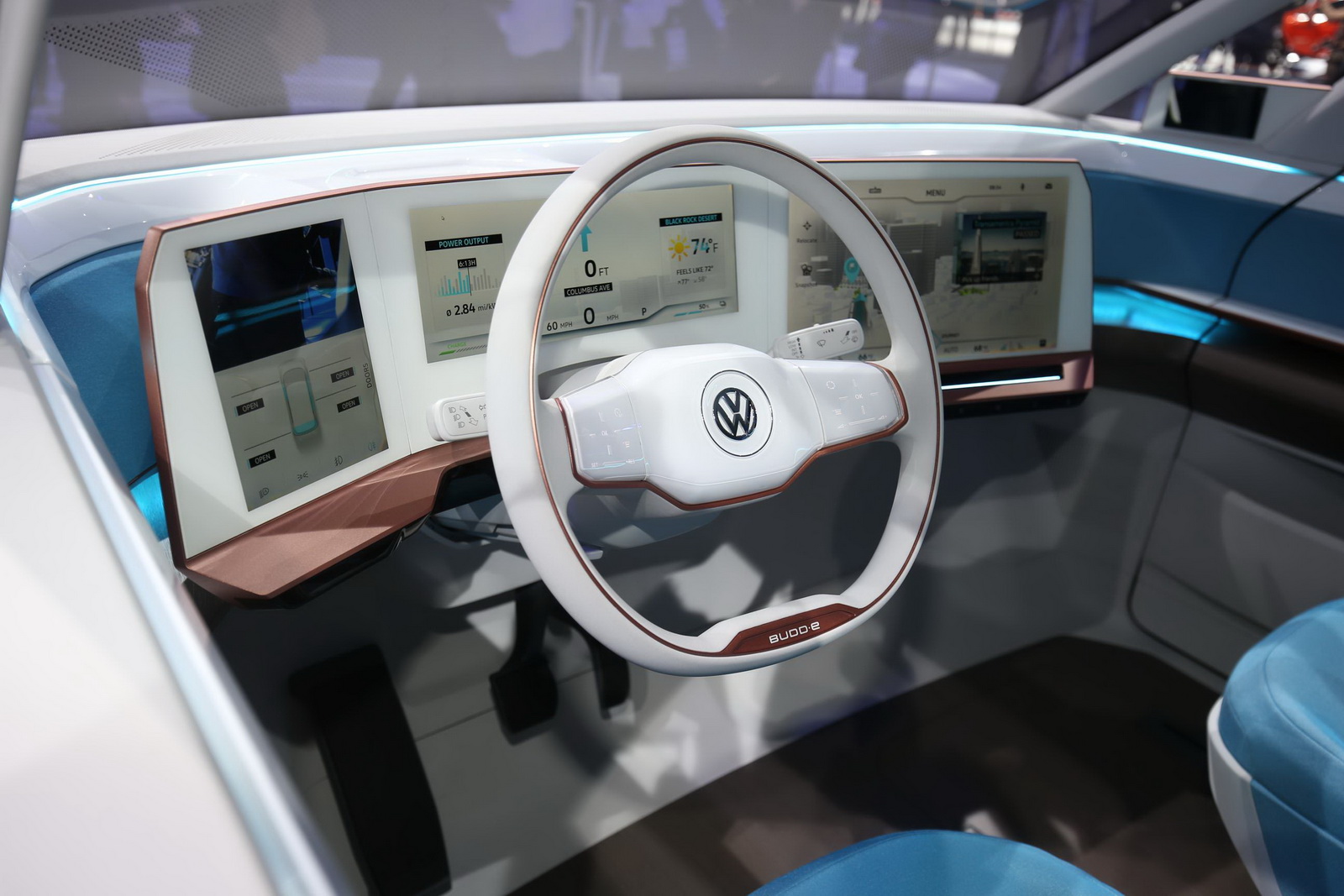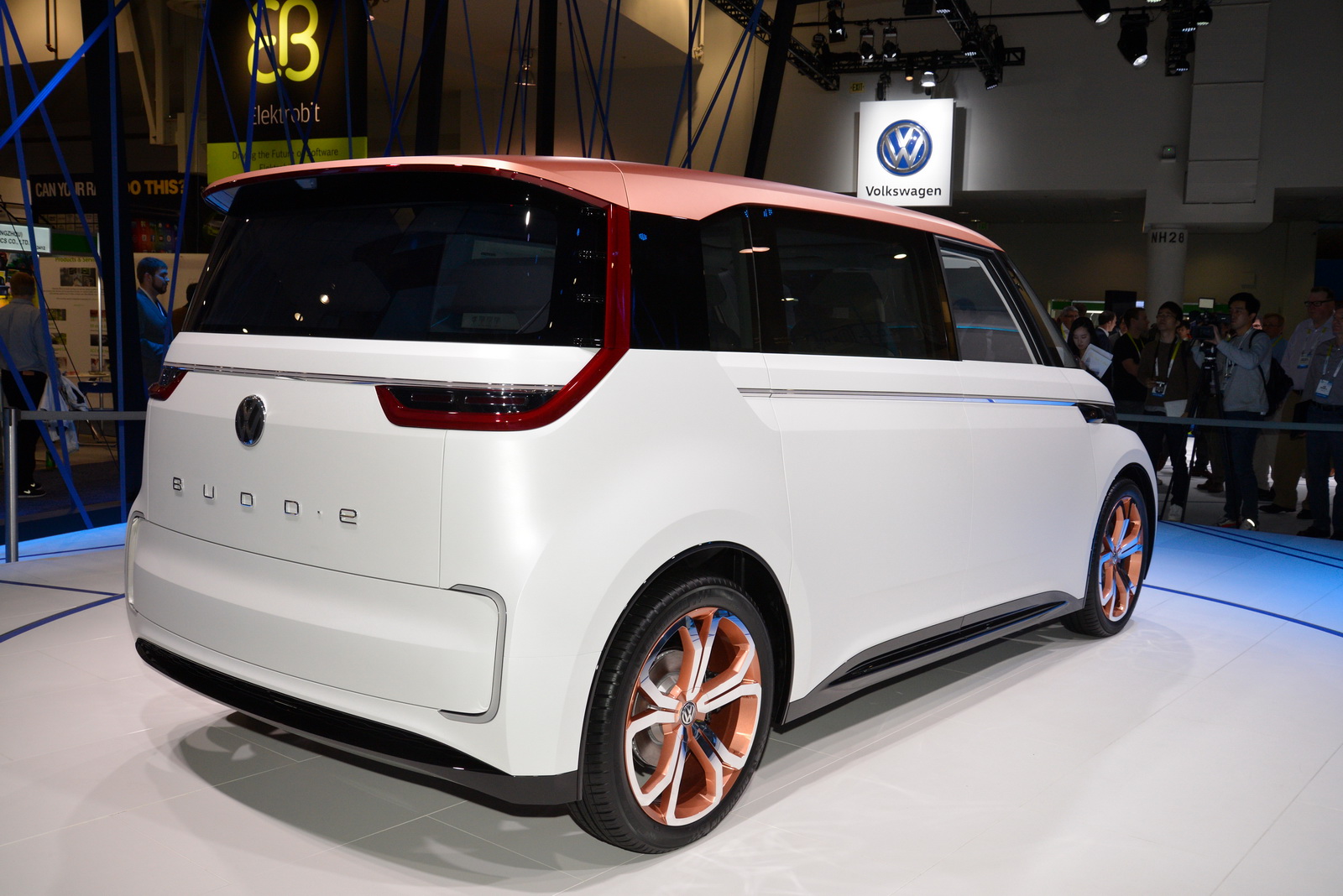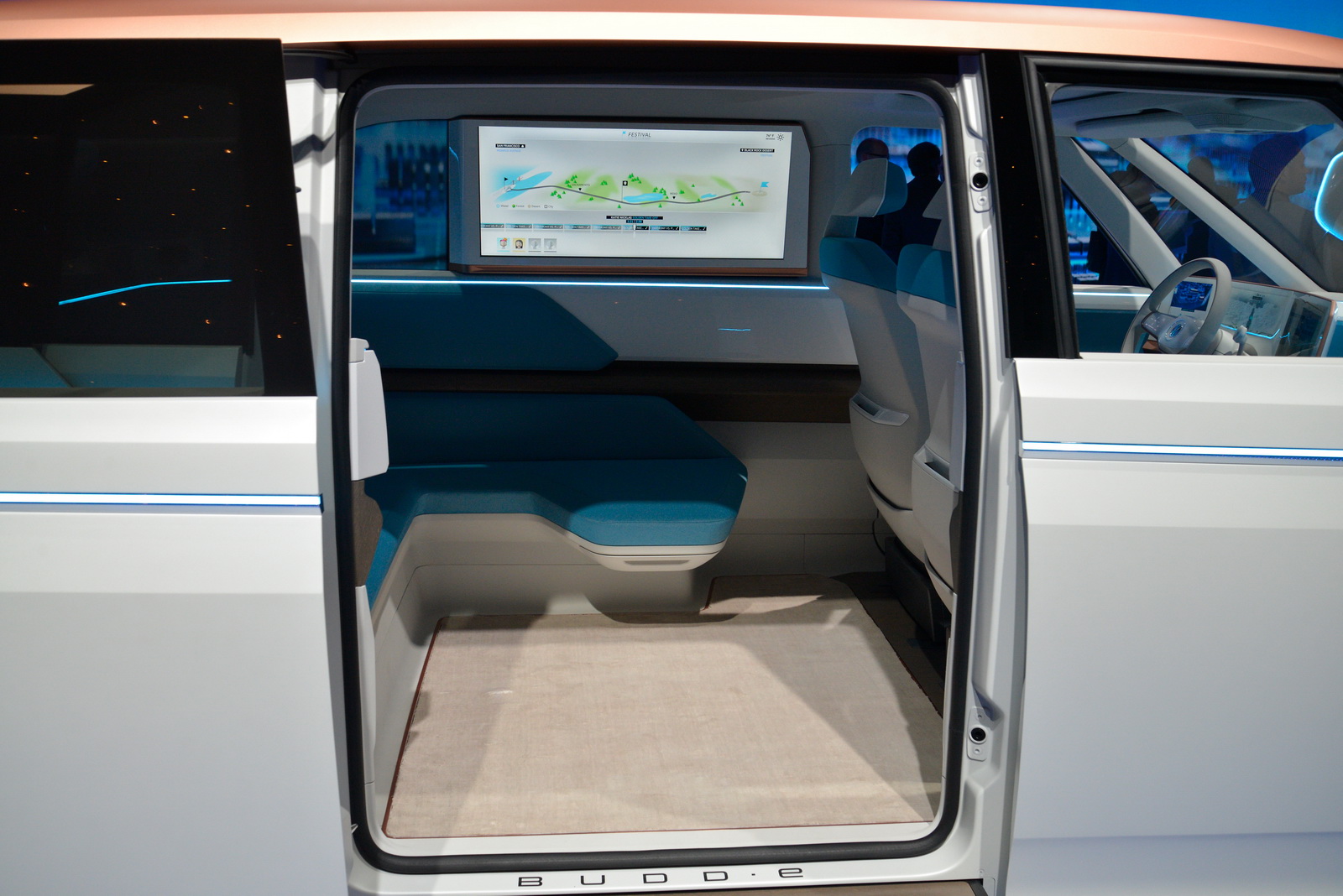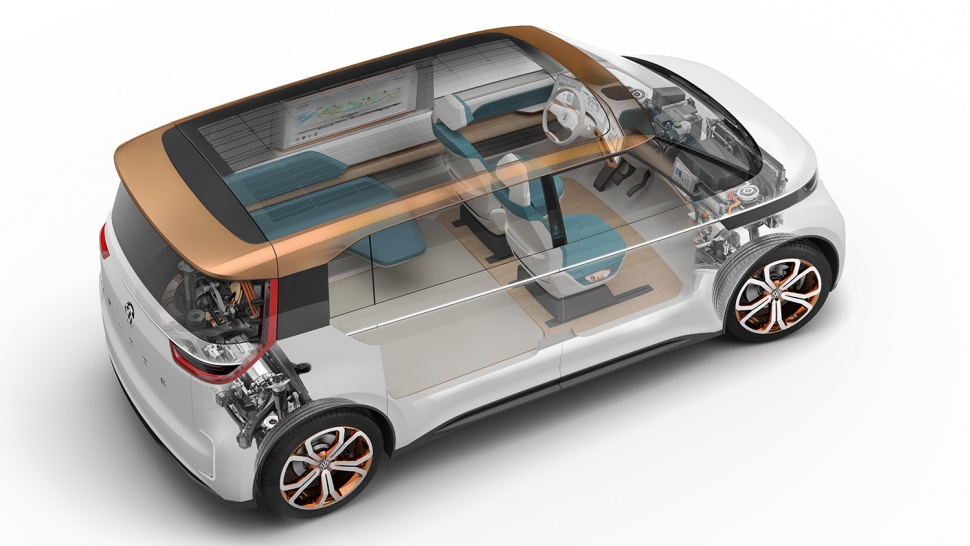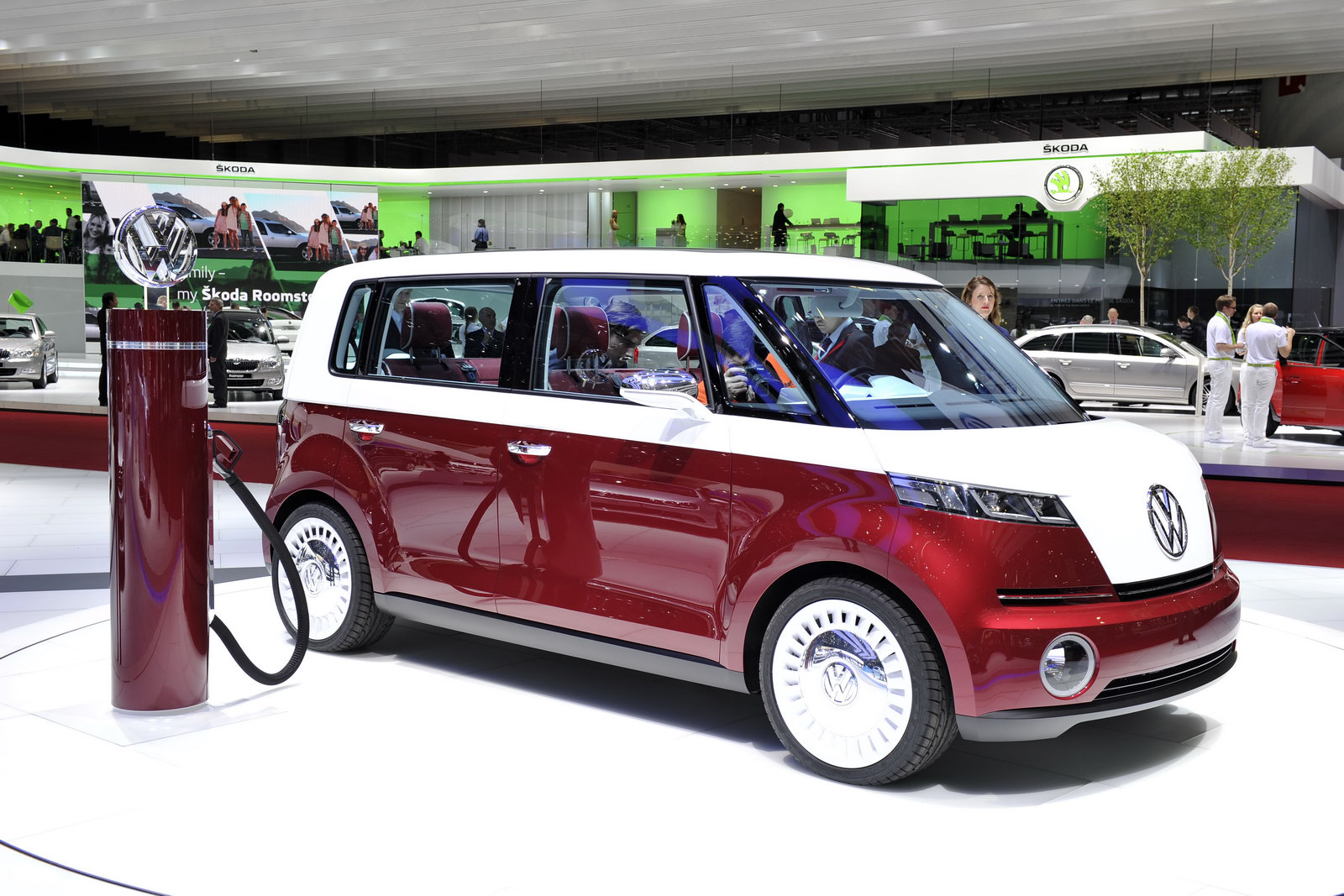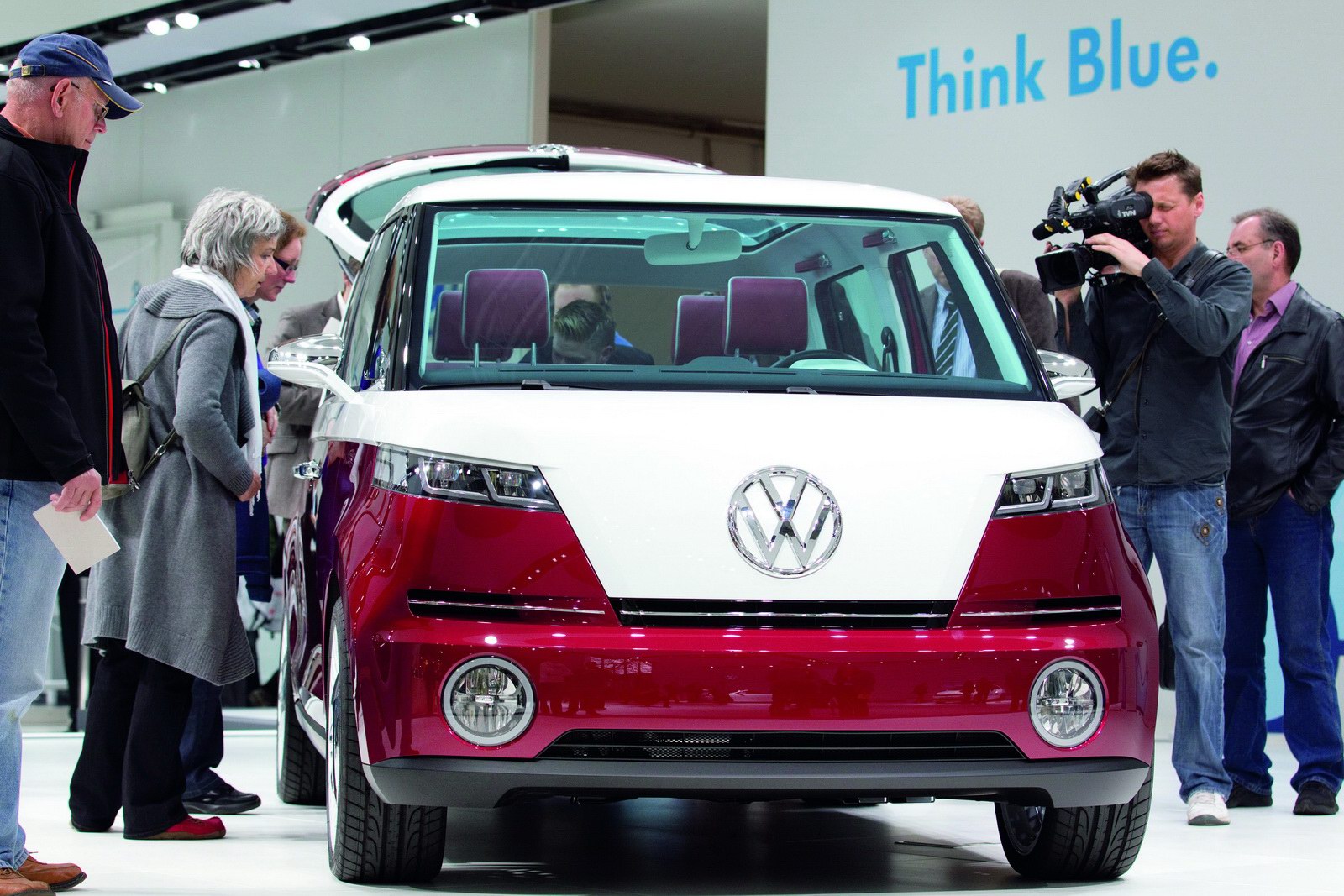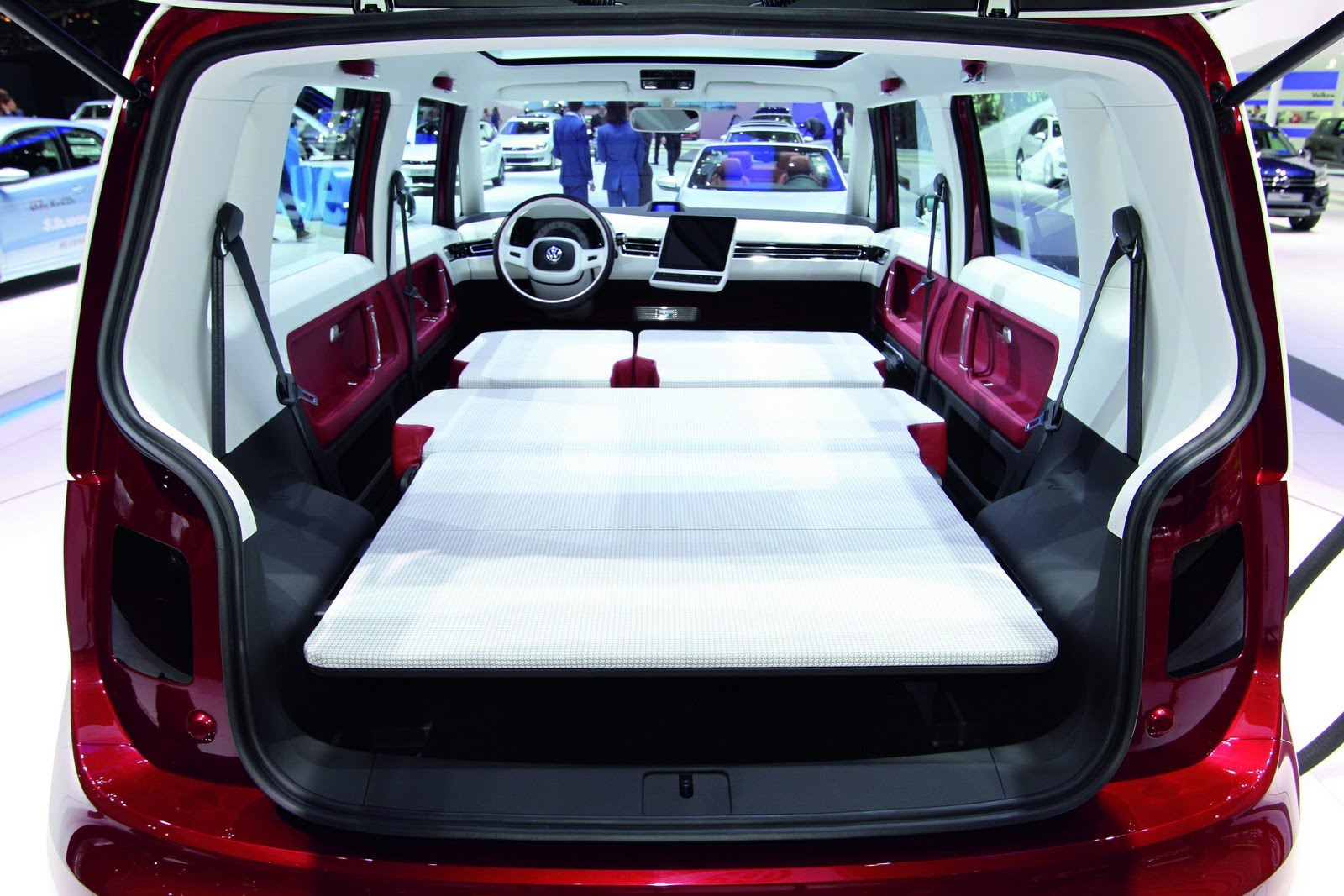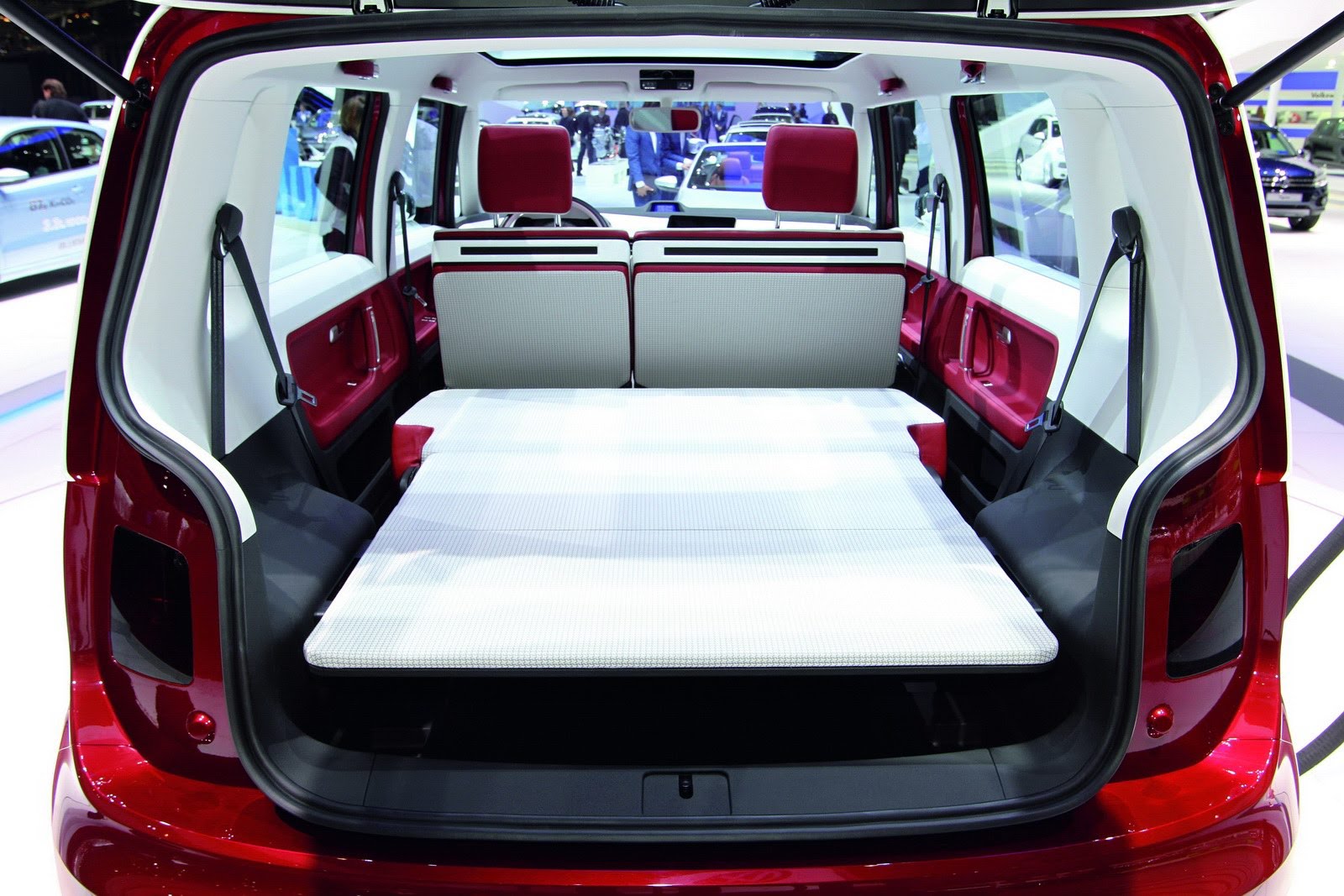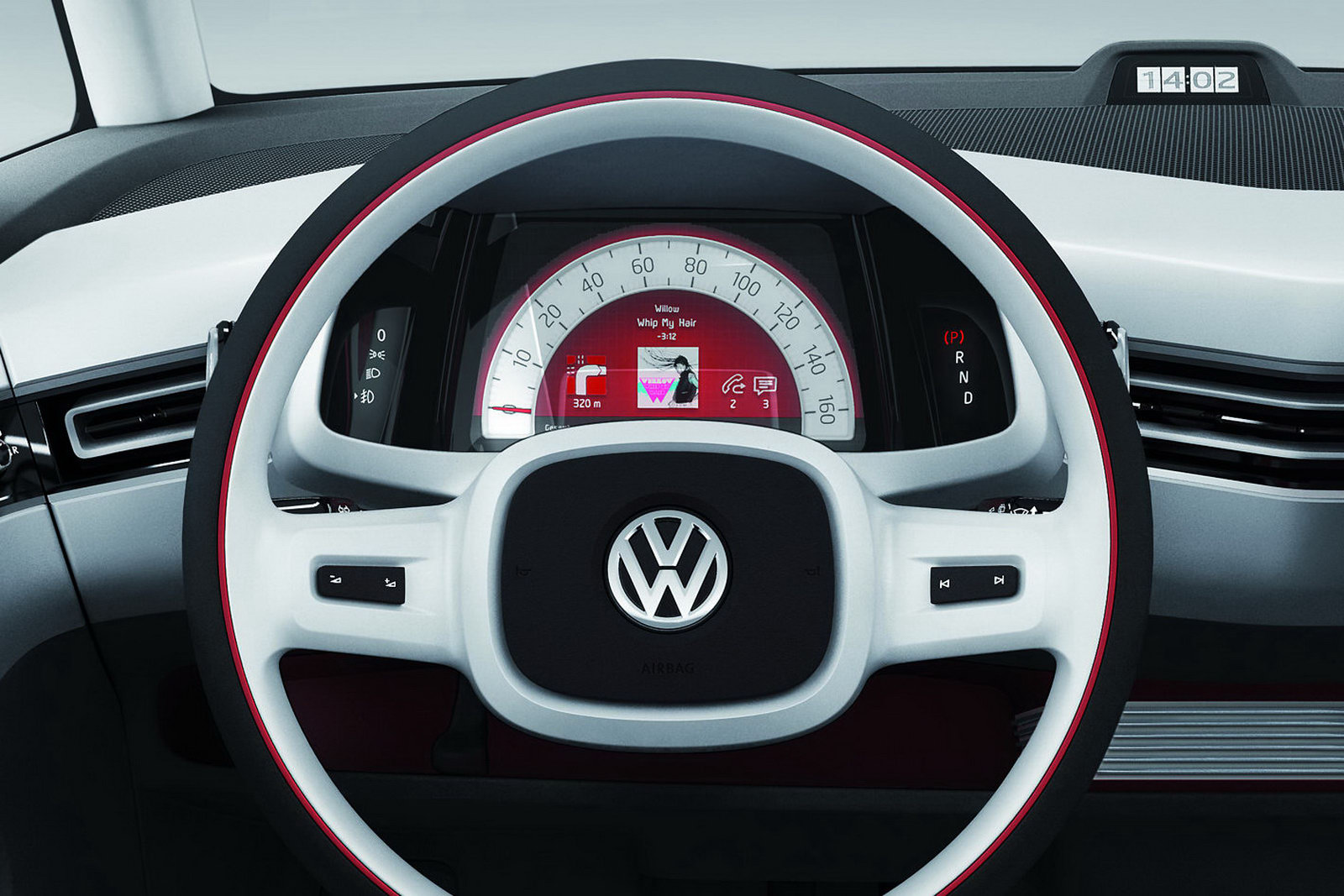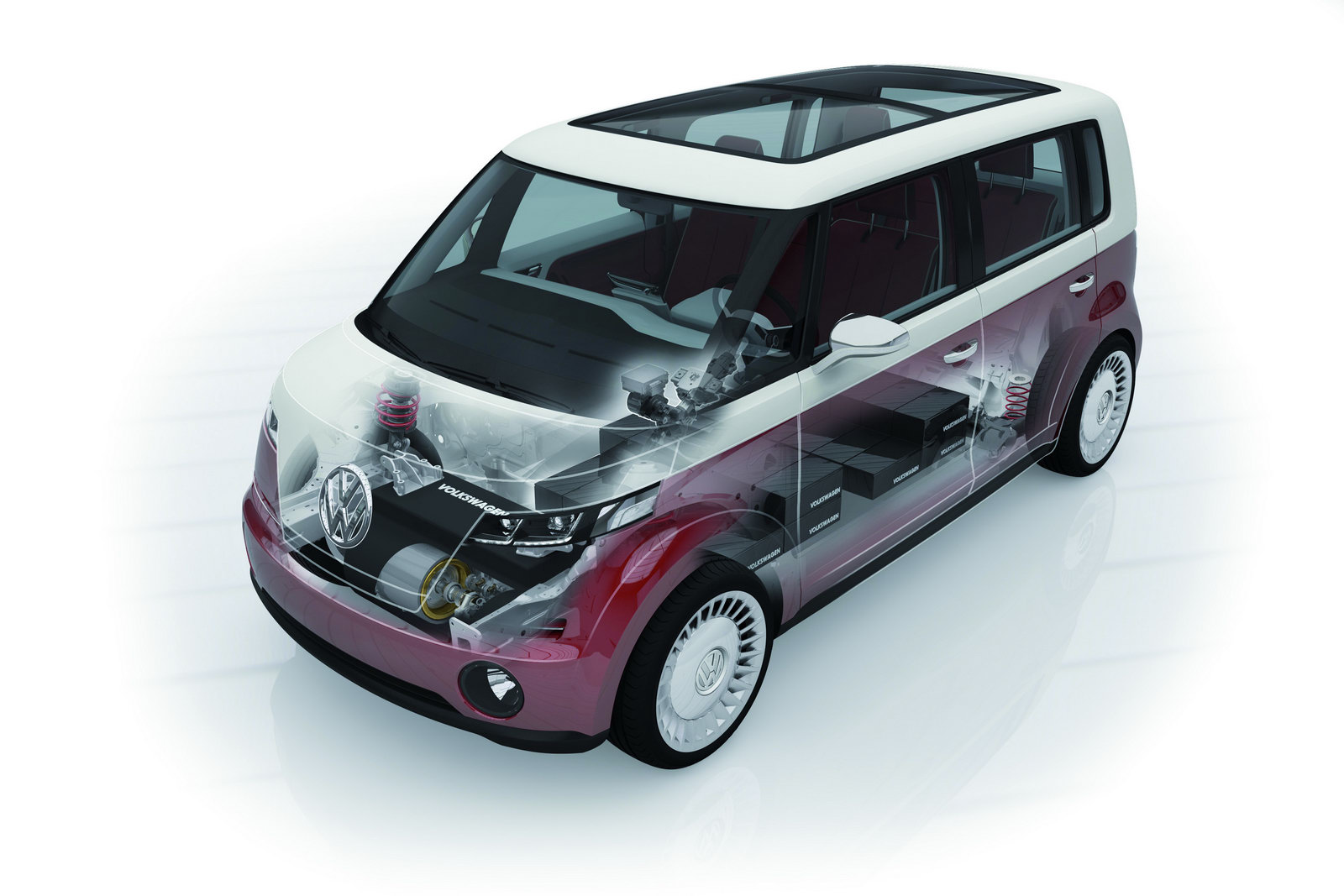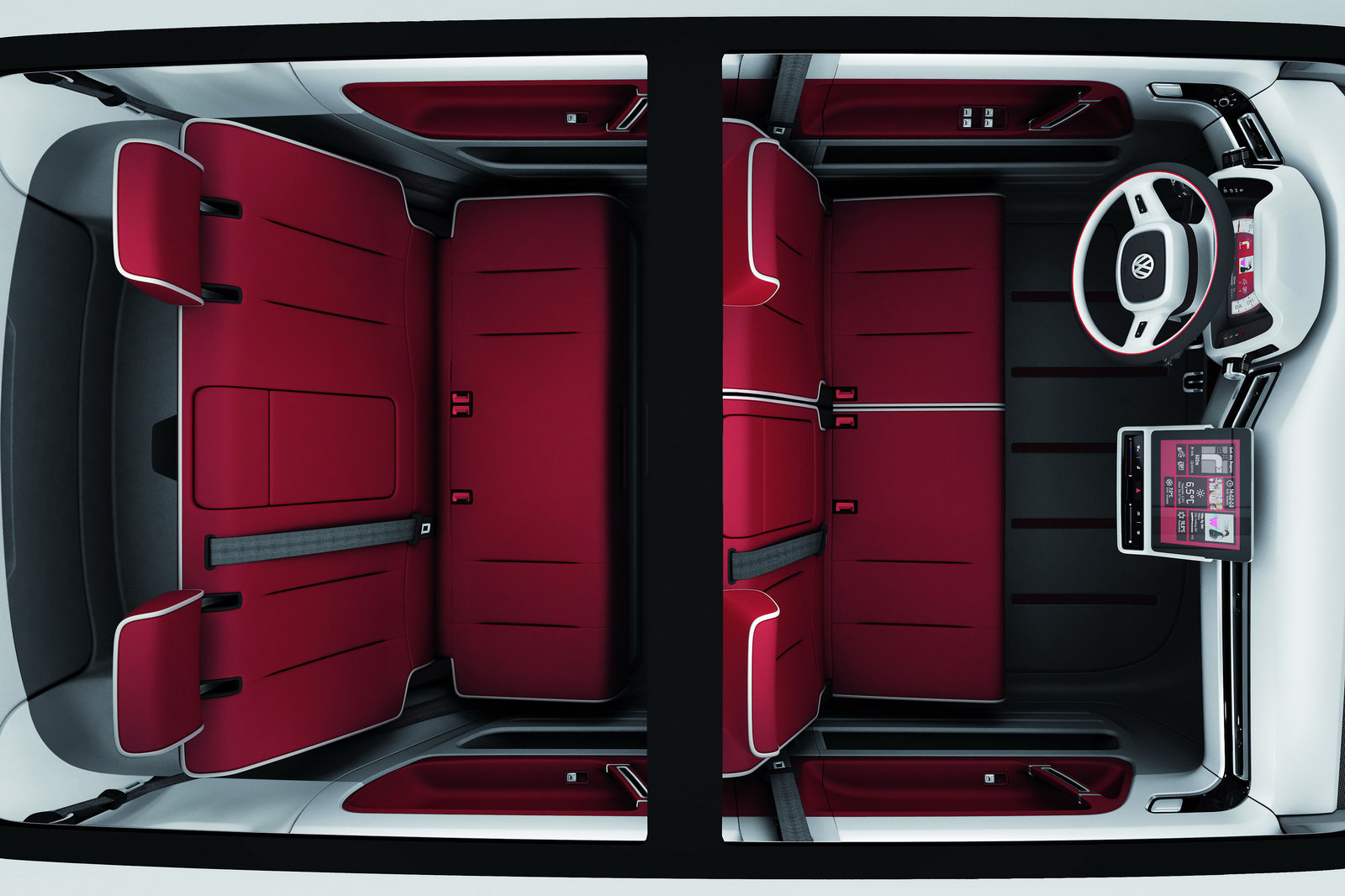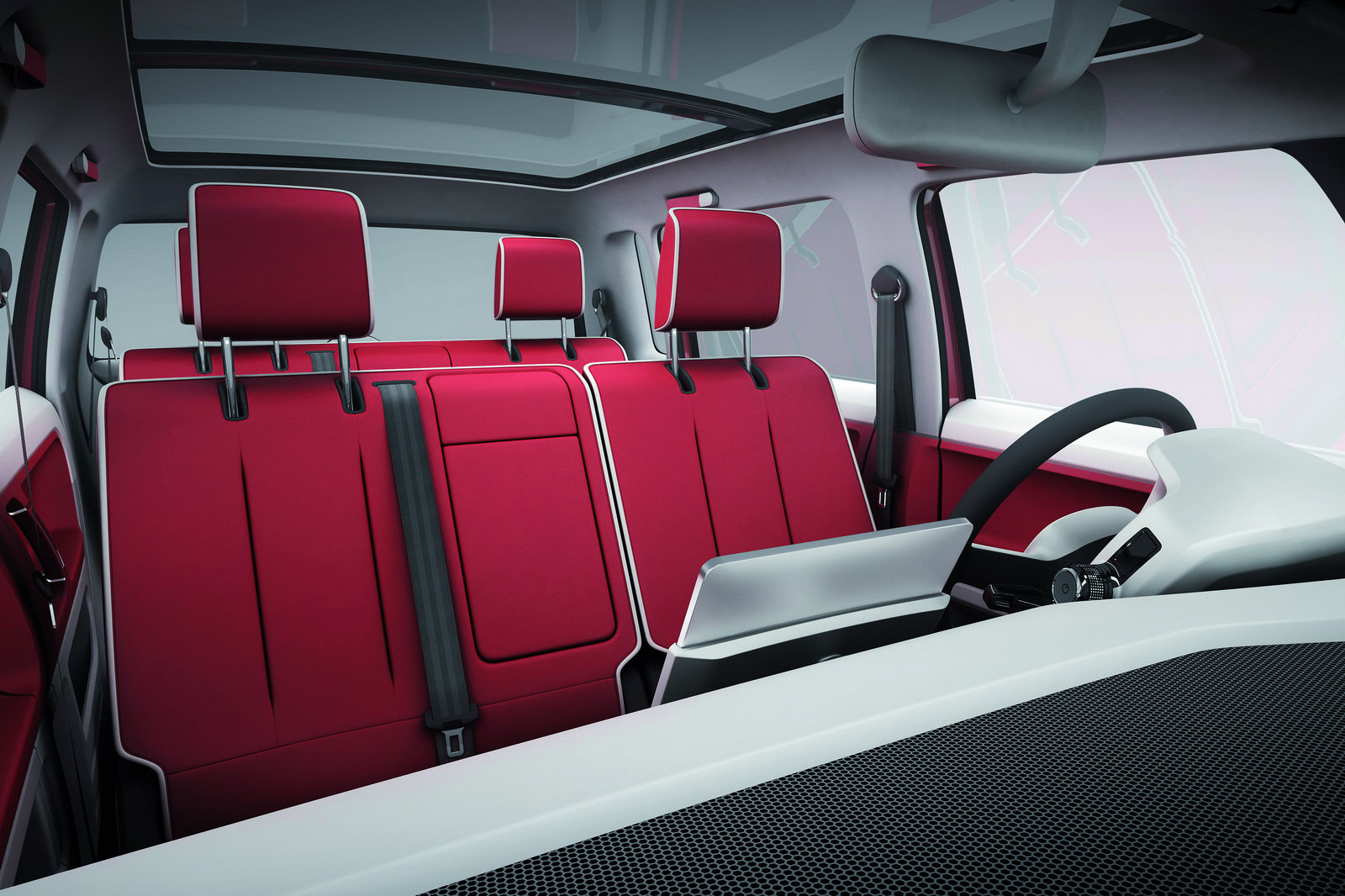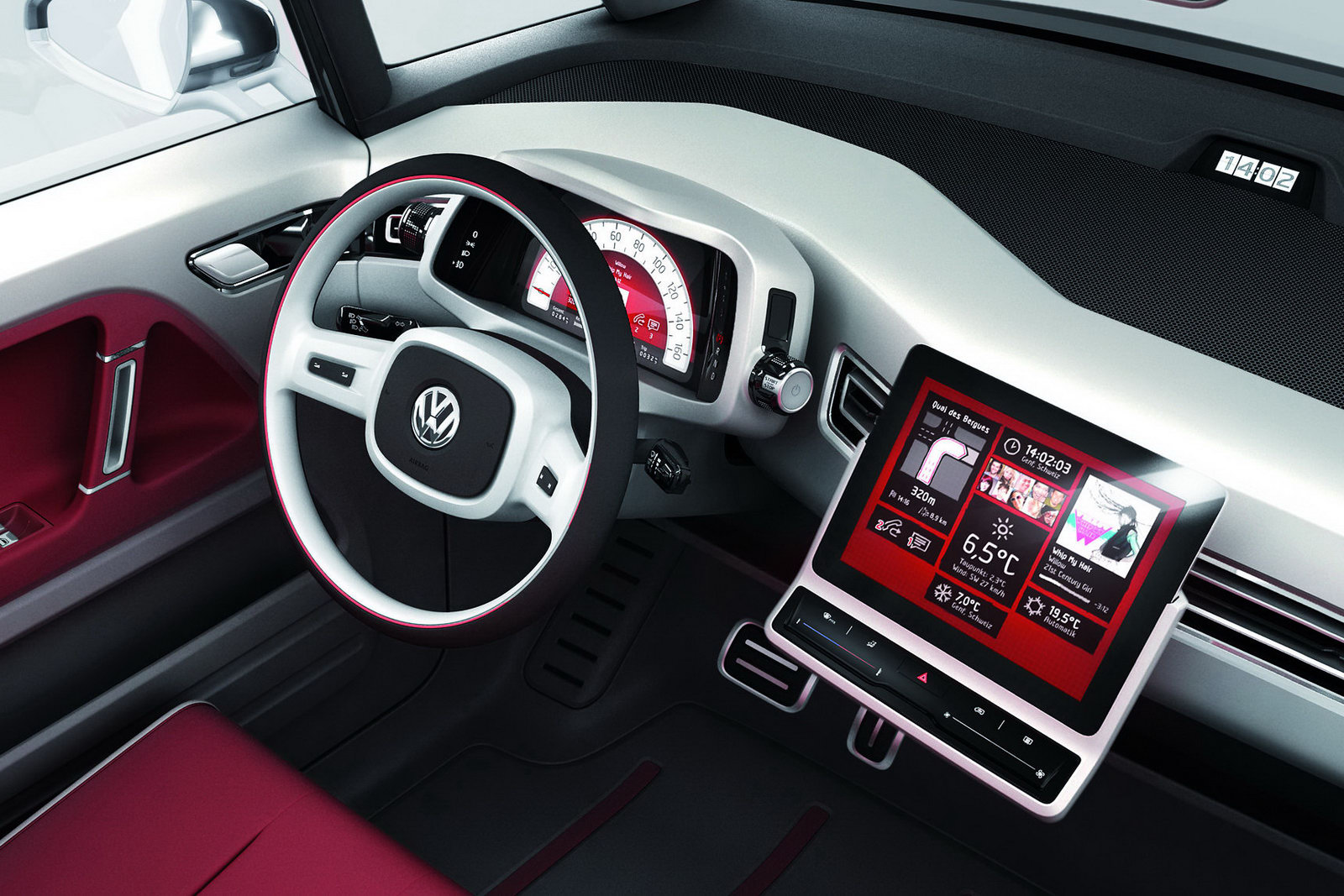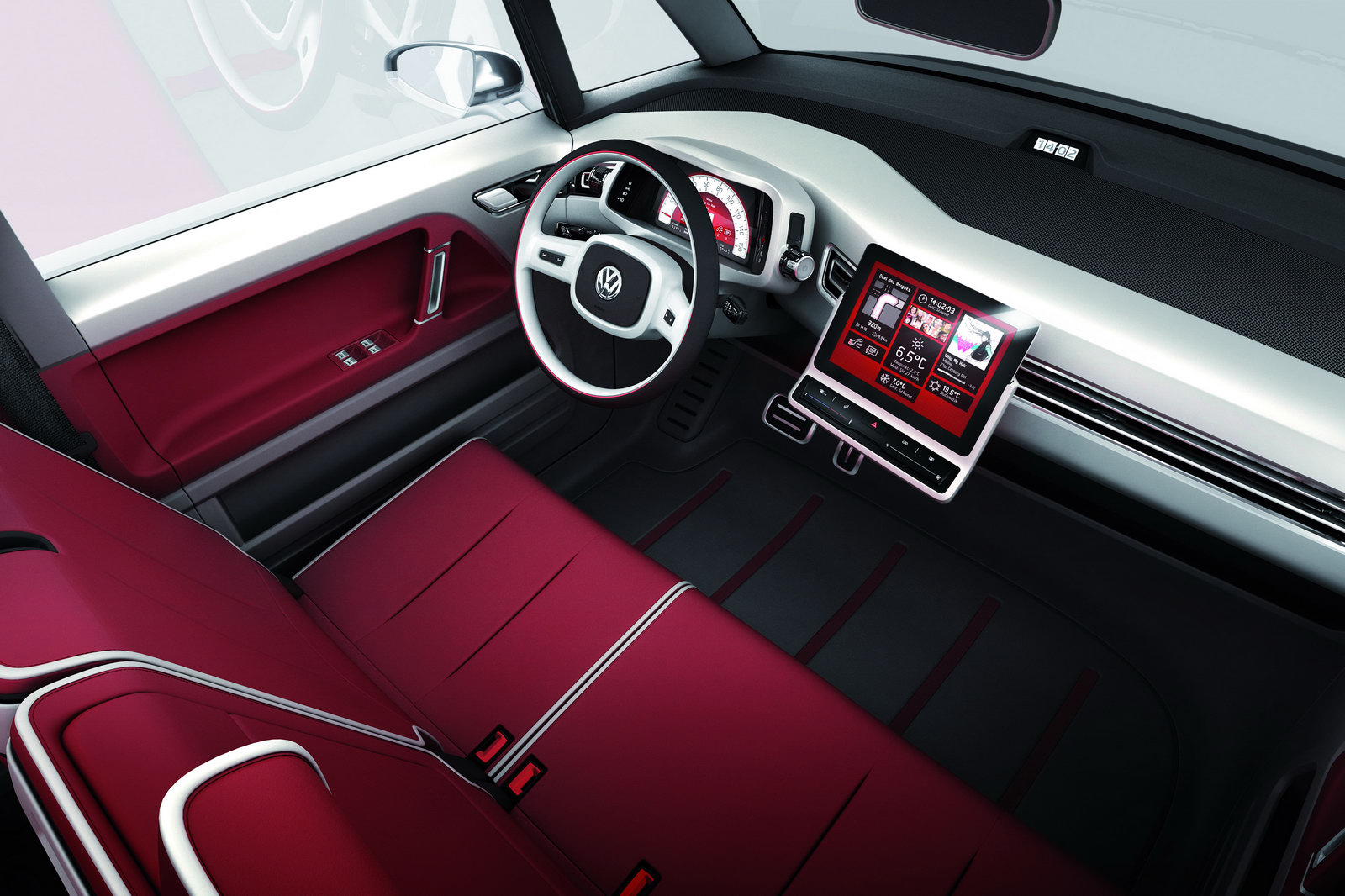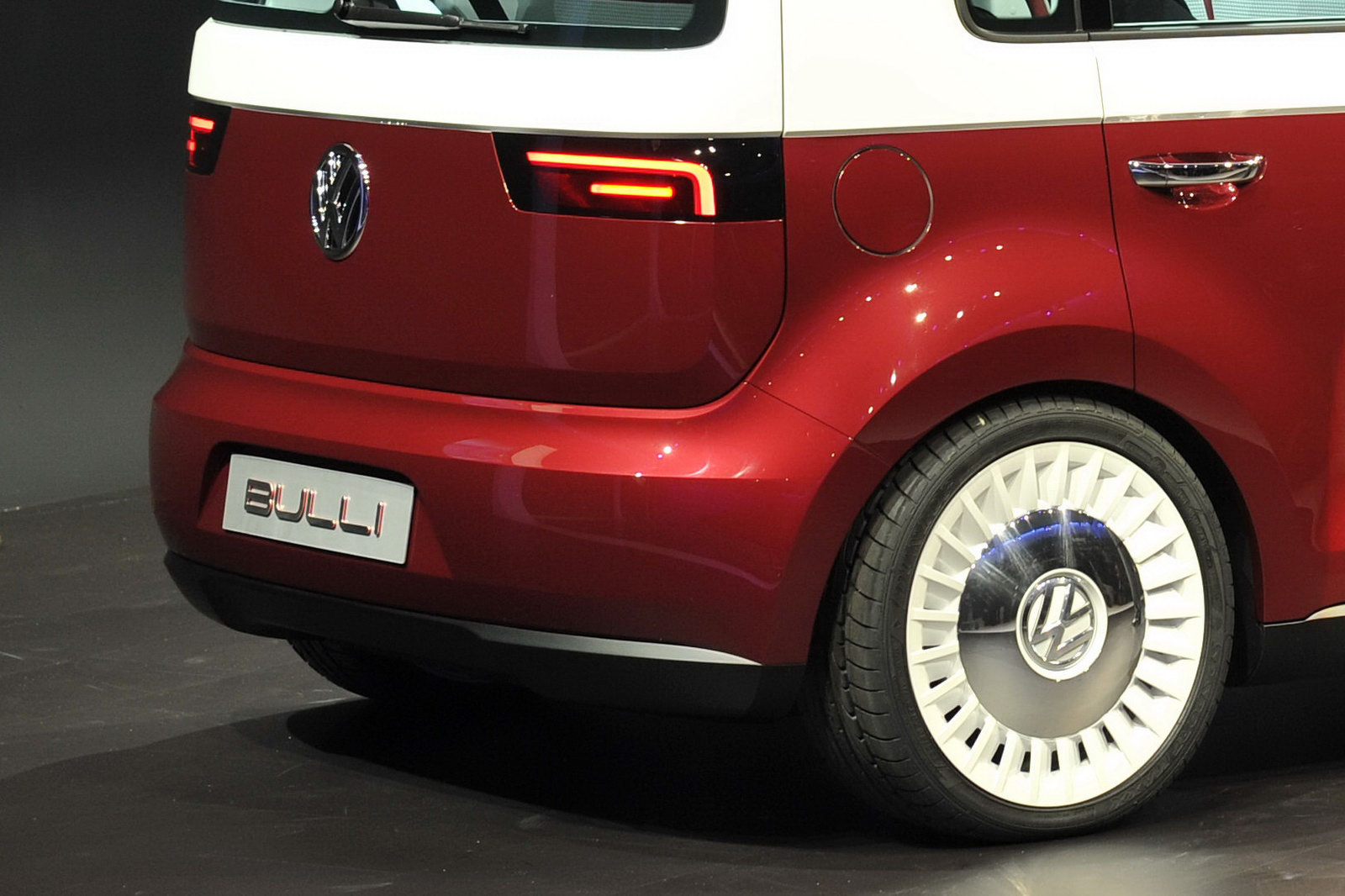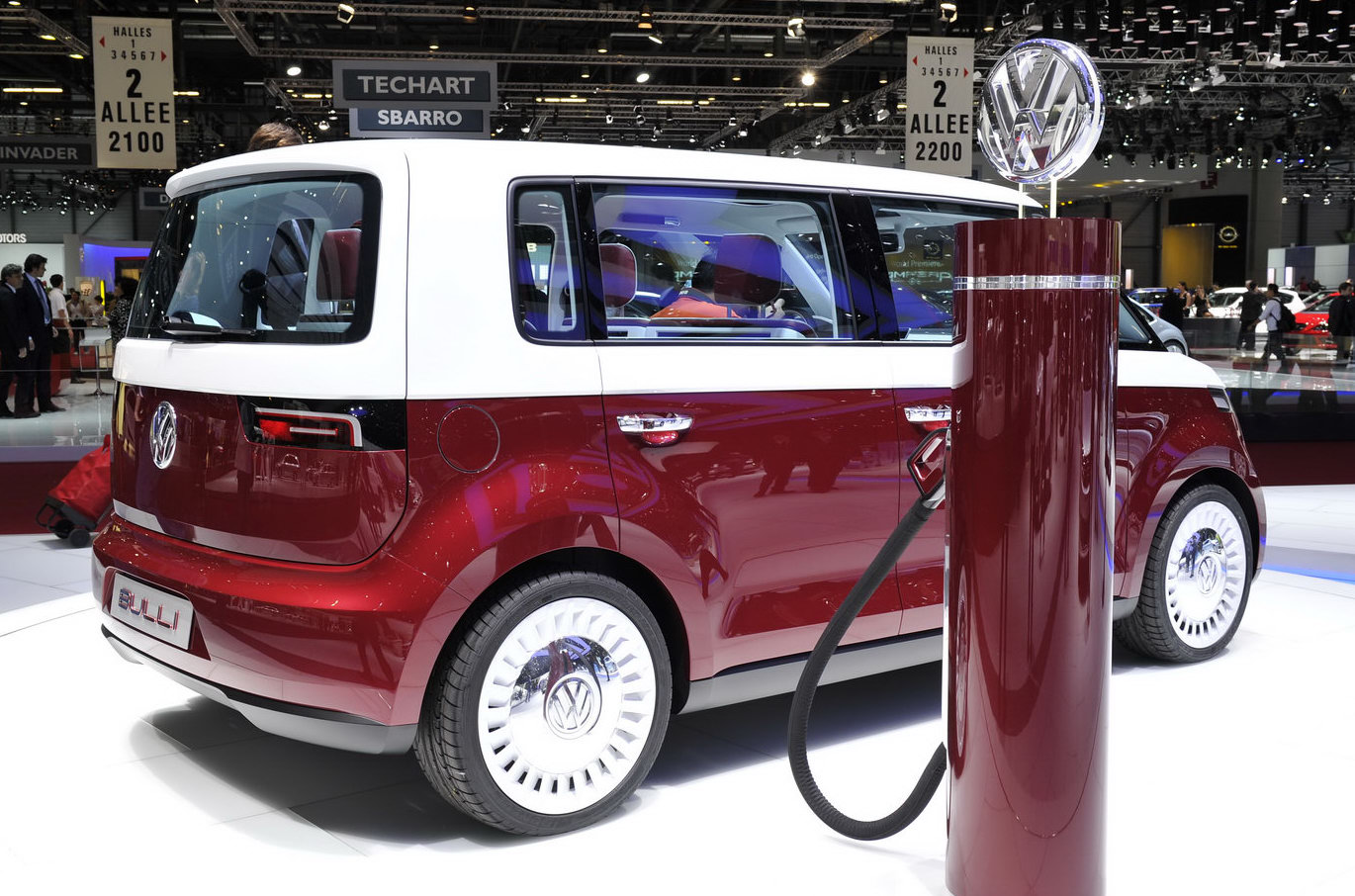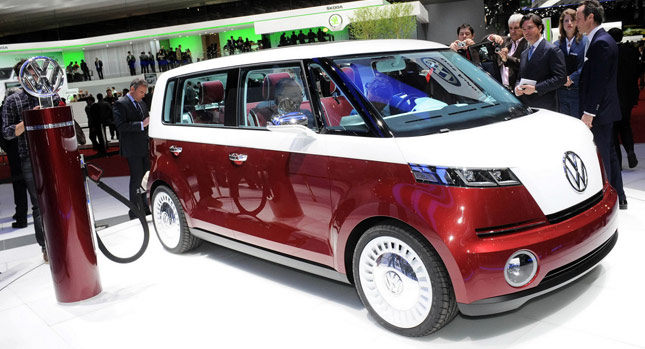Sometimes the wait for an automaker to turn a show-stopping concept car into a drivable, buyable production reality can feel like decades. In the case of the Volkswagen Microbus, it really was decades.
Two of the most exciting (for very different reasons) concept cars shown in 2001 were the Microbus and the Nissan Skyline GT-R. Nissan took a forever-feeling six years to hone the latter into 2007’s R35 GT-R, but only now, a full 21 years after first pulling back the covers on the show car, has VW finally delivered on the Microbus concept’s promise.
Given that we’ve been through four presidents in that time, and that some of the voters in the last of those presidential elections weren’t even born when the Microbus concept was shown, it looks unbelievably fresh, in the same way the Audi A2 and TT from same period also do. The VW Group’s design teams really were on fire at the turn of the millennium.
Related: New VW ID. Buzz Unveiled As A Delicious Microbus EV In Both Passenger And Cargo Van Flavors
Forget that the Microbus’s xenon lights and naturally aspirated 231 hp (234 PS) V6 are about as on-trend as an in-dash eight-track player. Instead, check out how clean and unfussy the design is, the recessed door handles, slim horizontal rear light clusters, and touchscreen entertainment system.
Seriously, if you’d missed out on seeing this retro minivan at the time and someone showed you a picture today telling you it was a 2022 production car, would you have any reason to disbelieve them, if not for the fact that it hasn’t got an iPad Pro glued to the console?
You might even argue that it looks better than the 2024 ID. Buzz VW has finally delivered. Tougher, more assertive, less reliant on pure nostalgia to stir our emotions. No wonder there was such a, ahem, buzz in the air when VW announced in June 2002 that it would create a production version of the bus from the T5 van sold in Europe, and get the thing into showrooms before the middle of the decade.
As we all know, that didn’t happen. VW scrapped the project, telling European customers they’d have to make do with the T5, and then trying to convince U.S. buyers that not only did they not want a cool, retro take on a VW classic, but they actually wanted a terminally boring badged-engineered Dodge Grand Caravan called the VW Routan instead.
2011 Bulli
Behind the scenes though, VW hadn’t let the idea of a new bus drop completely. At the 2011 Geneva Motor show it revealed the Bulli, whose name comes from the intense name of the original Type 2 bus, which VW was forced to change to avoid confusion with a German tractor. Measuring 156 inches (3,960 mm) to the Microbus’s 197 inches (5,000 mm) and downgrading its seven seats to five, the Bulli was a smaller vehicle, but one with bigger ideas. Ideas about an electric future.
VW had suggested that the 2001 Mircrobus might have hit the street with a gas-powered V6, but a decade on, the writing was on the wall for combustion cars, even if most of us didn’t yet know it. So the Bulli was fitted with a tiny 113 hp (115 PS) electric motor drawing power from a 40 kWh lithium-ion battery.
2016 Budd-e
Related: Forget Flower Power, The 2022 VW T7 Multivan Is All About Hybrid Power
Five years later, there was still no sign of a production bus, but VW renewed its commitment with the Budd-e, another five seat electric minivan, this one unveiled at the 2016 Consumer Electronics Show (CES) in Las Vegas.
The design rowed back on the retro theme and the addition of a second motor gave the Budd-e a 302 hp (306 PS) total output, an estimated 233 miles (375 km) of electric range, and all-wheel drive.
2017 I.D. Buzz
But a year later, the nostalgic look was back, and so was a third row of seats. The I.D. Buzz wowed crowds at the 2017 North American International Auto Show (NAIAS) with a fusion of styling cues blatantly cribbed from the original split-screen Type 2 bus of the 1950s and ’60s, plus three horizontal lines on the C-pillar that referenced the four on the 2001 Microbus concept, and lashings of LED lighting to bring it up to date.
The exterior styling was very similar to what we’ve ended up with on the 2024 ID. Buzz, but in true concept car style, the interior was bolder, featuring a large portrait touchscreen and crazy rectangular multifunction steering wheel that could retract into the dash for autonomous driving. VW promised up to 369 hp (374 PS) from a dual-motor setup, a driving range of up to 270 miles (168 mikes) and a zero to 62 mph time of just 5 seconds.
2022 ID. Buzz (2024 MY)
Finally, 21 years after getting us excited with the original Microbus concept, VW was ready to take the wraps off its production-ready modern incarnation. Compared with the 2017 concept, the 2024 model-year minivan has lost a period (it was I.D. Buzz, and is now ID. Buzz), the swiveling front seats and some of the interior sparkle.
Related: VW’s Forgotten W12 Supercar Claimed 7 World Records And Didn’t Even Reach Production
And instead of the the show car’s 369 hp (374 PS), customers will have to make do with a single 201 hp (204 PS) electric motor from the ID.4, whose MEB platform it shares, though more powerful versions are a given, down the line.
Do you think the 2024 ID. Buzz looks better or worse than the 2001 Microbus? Leave a comment and let us know.




